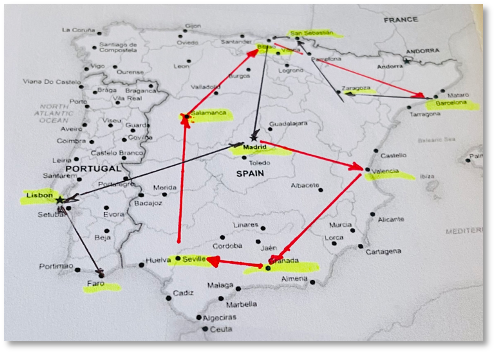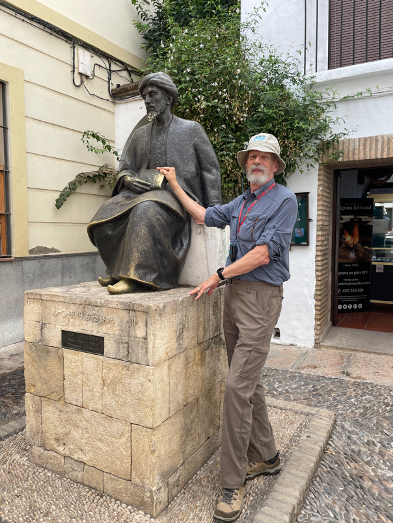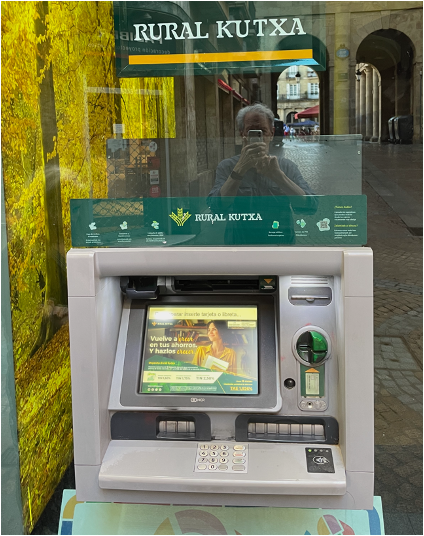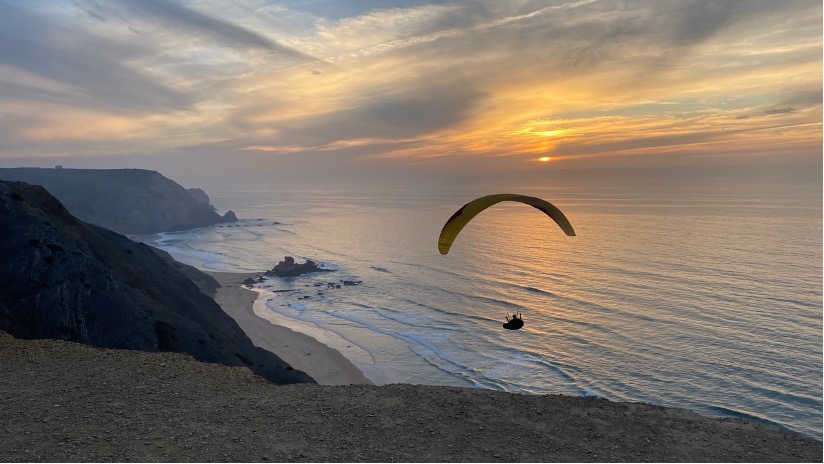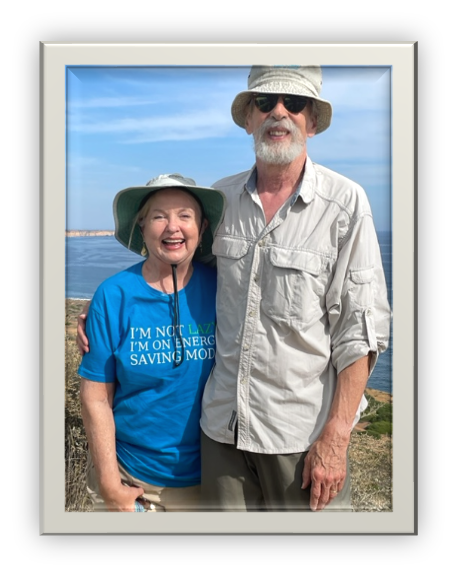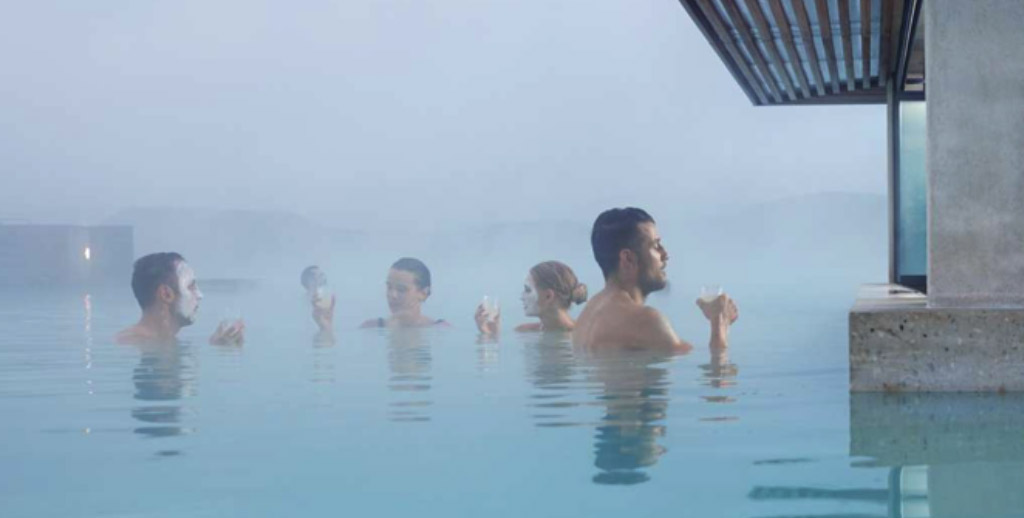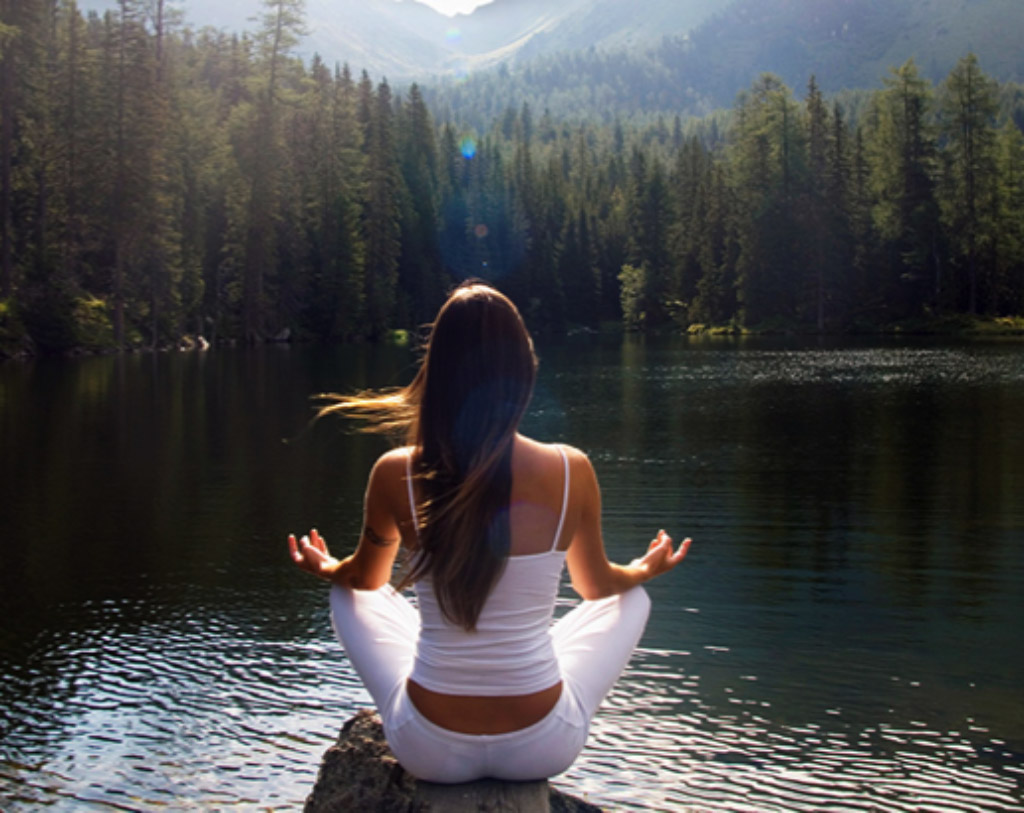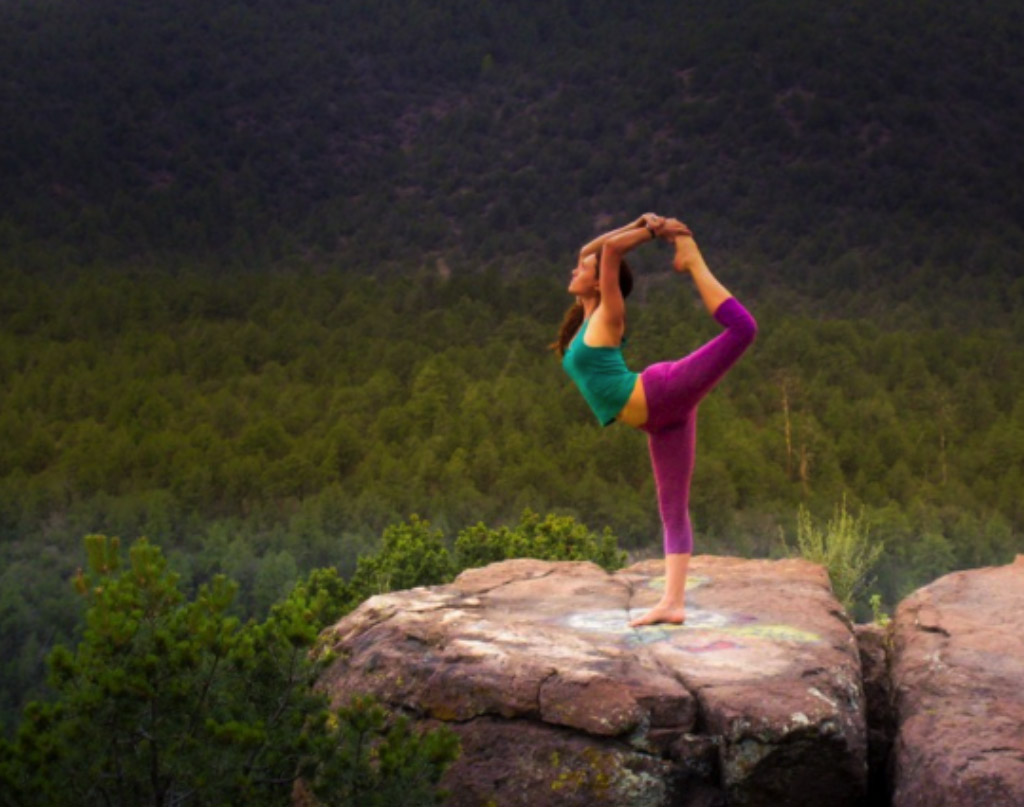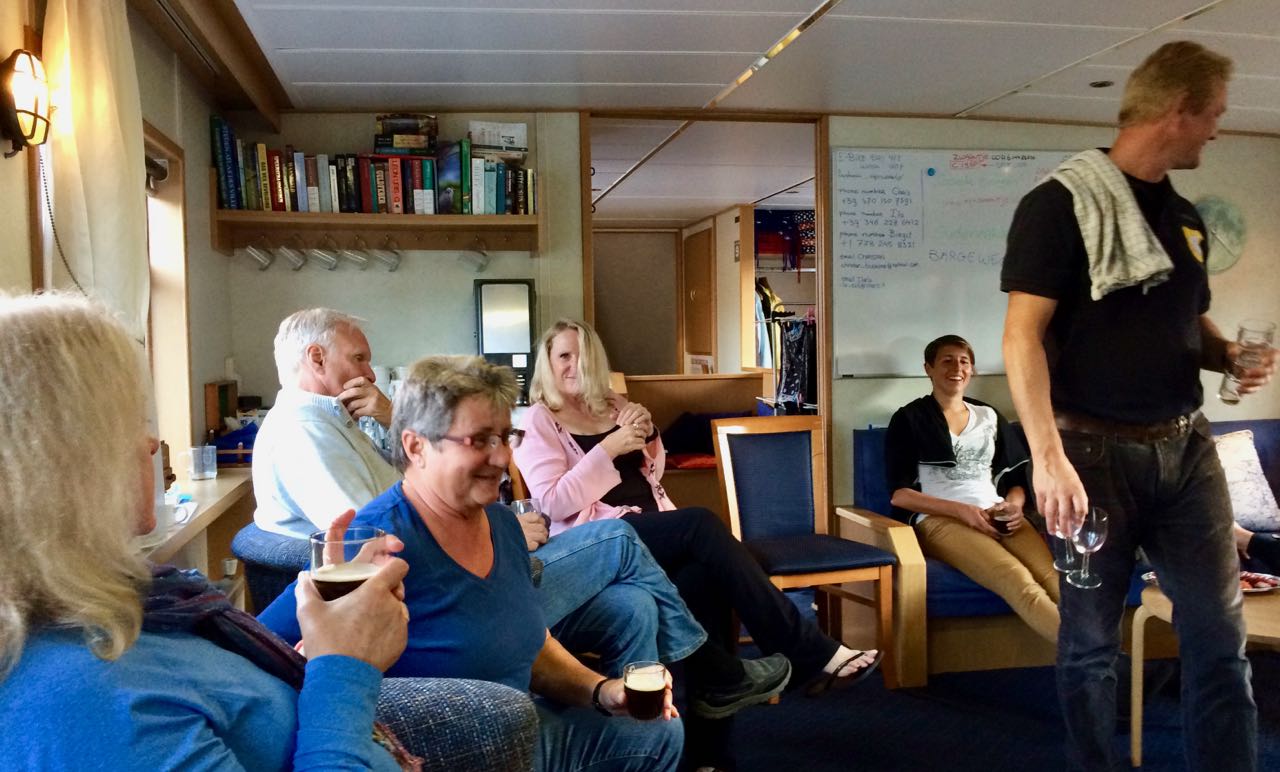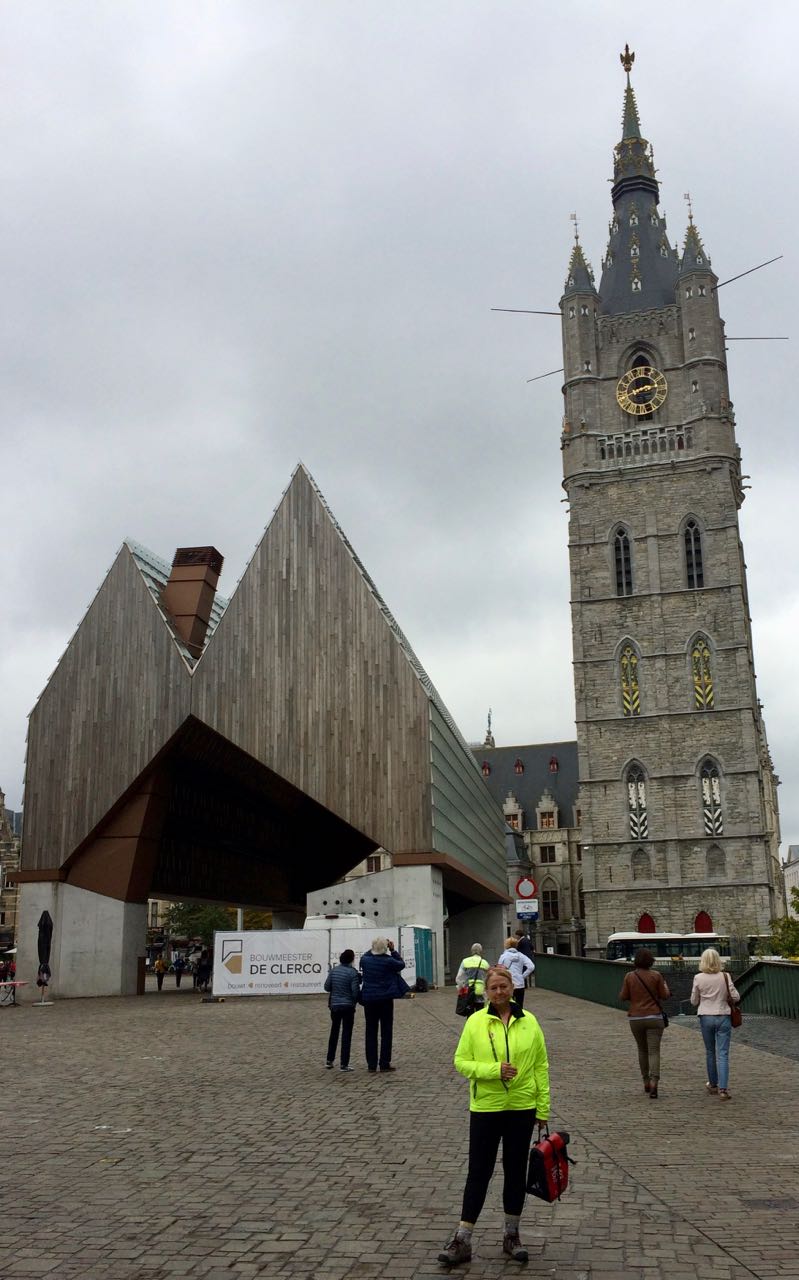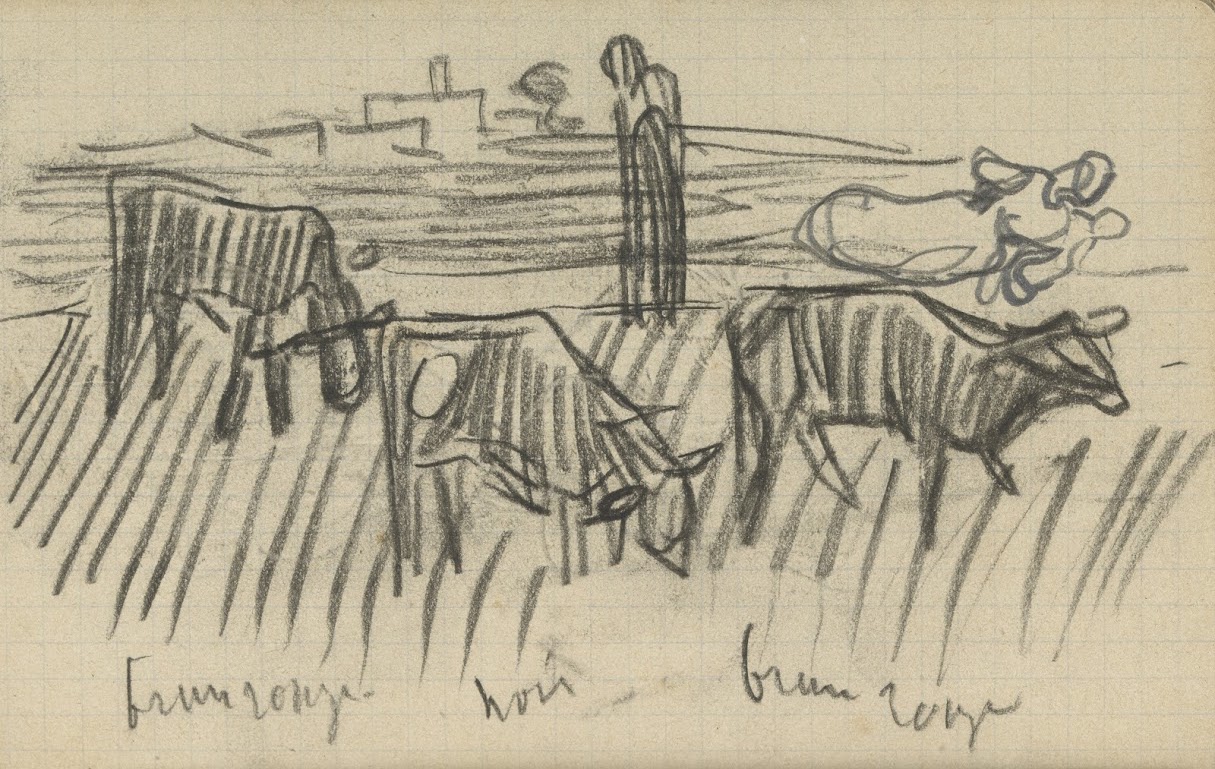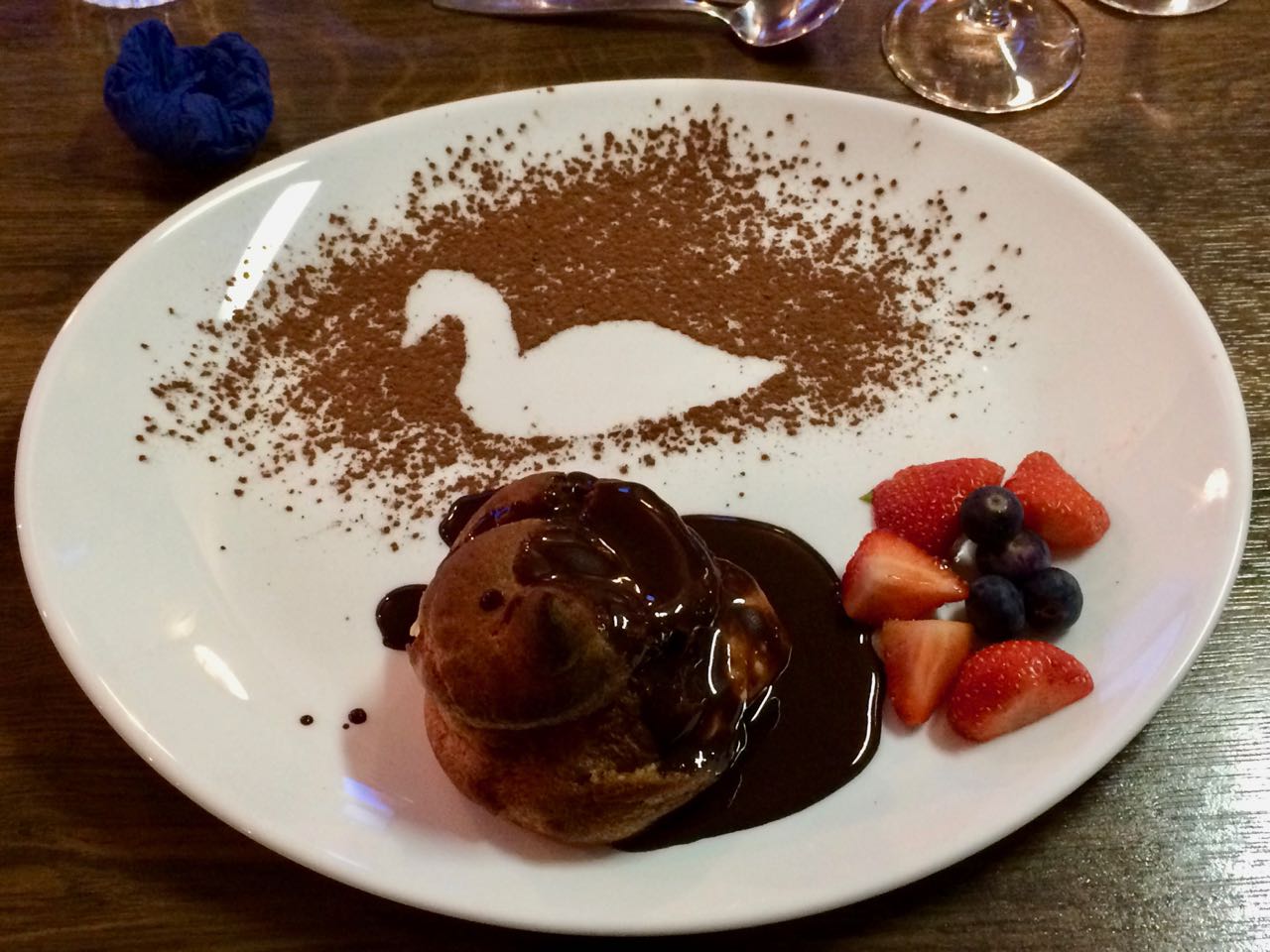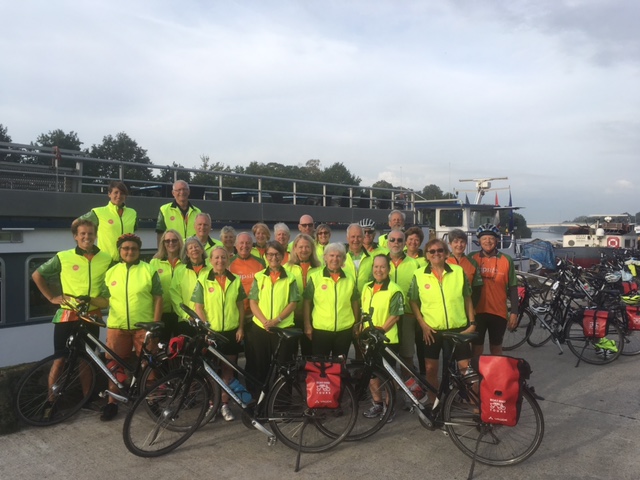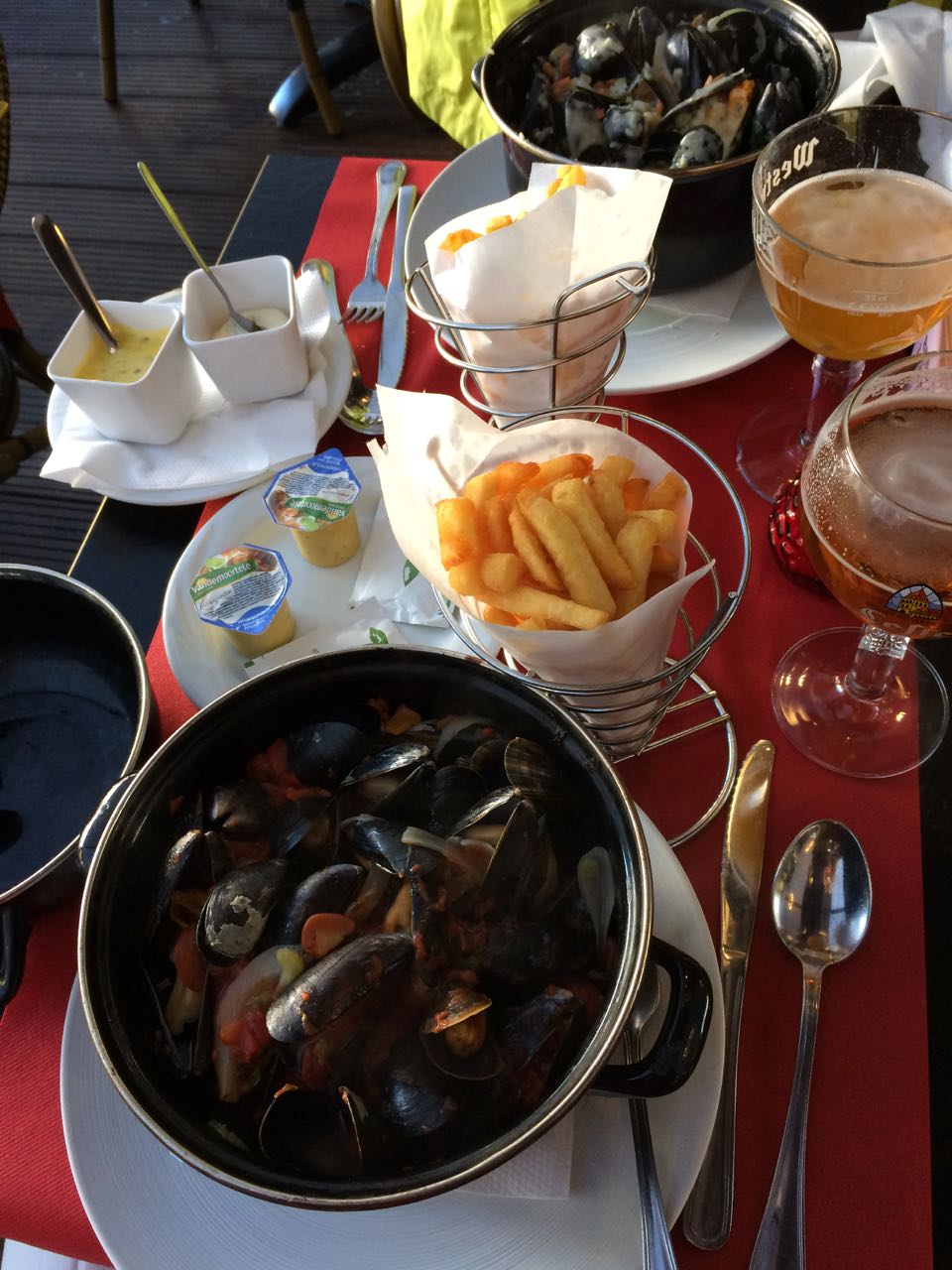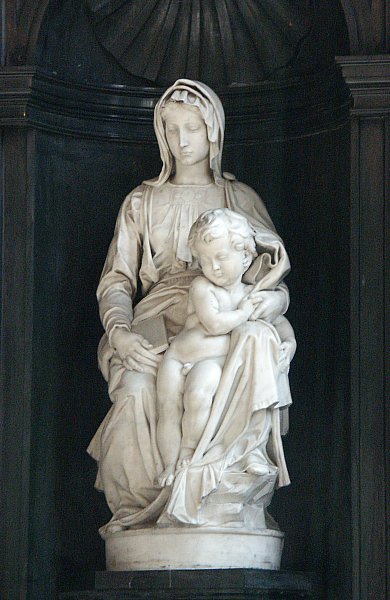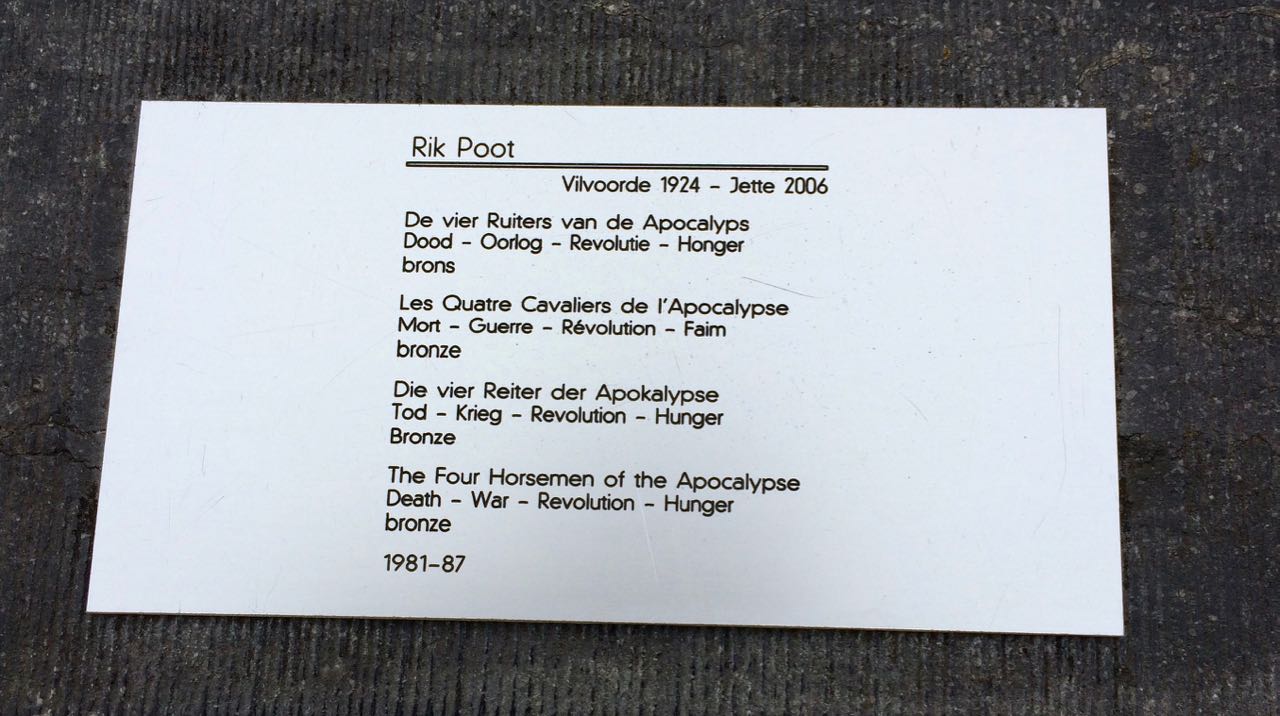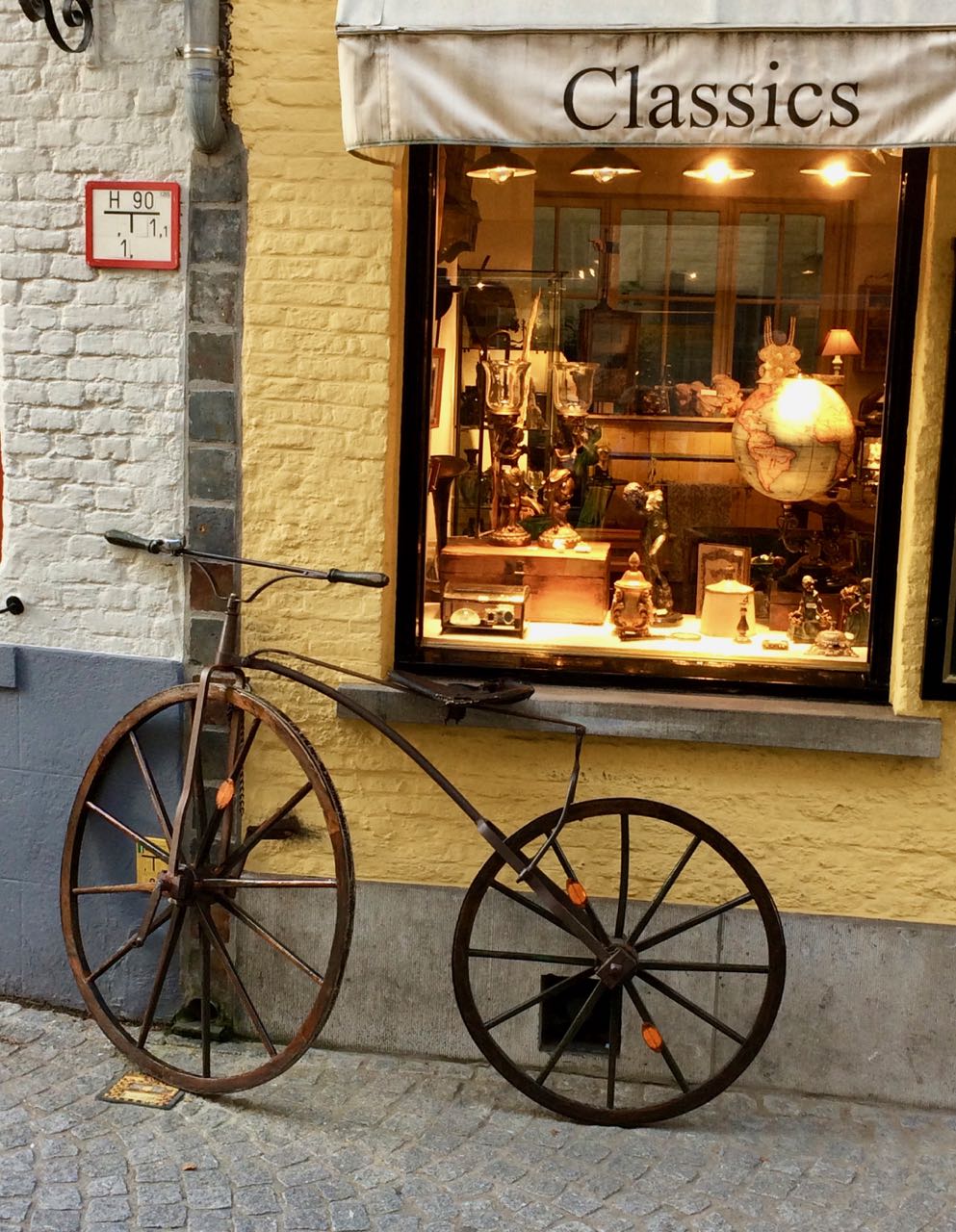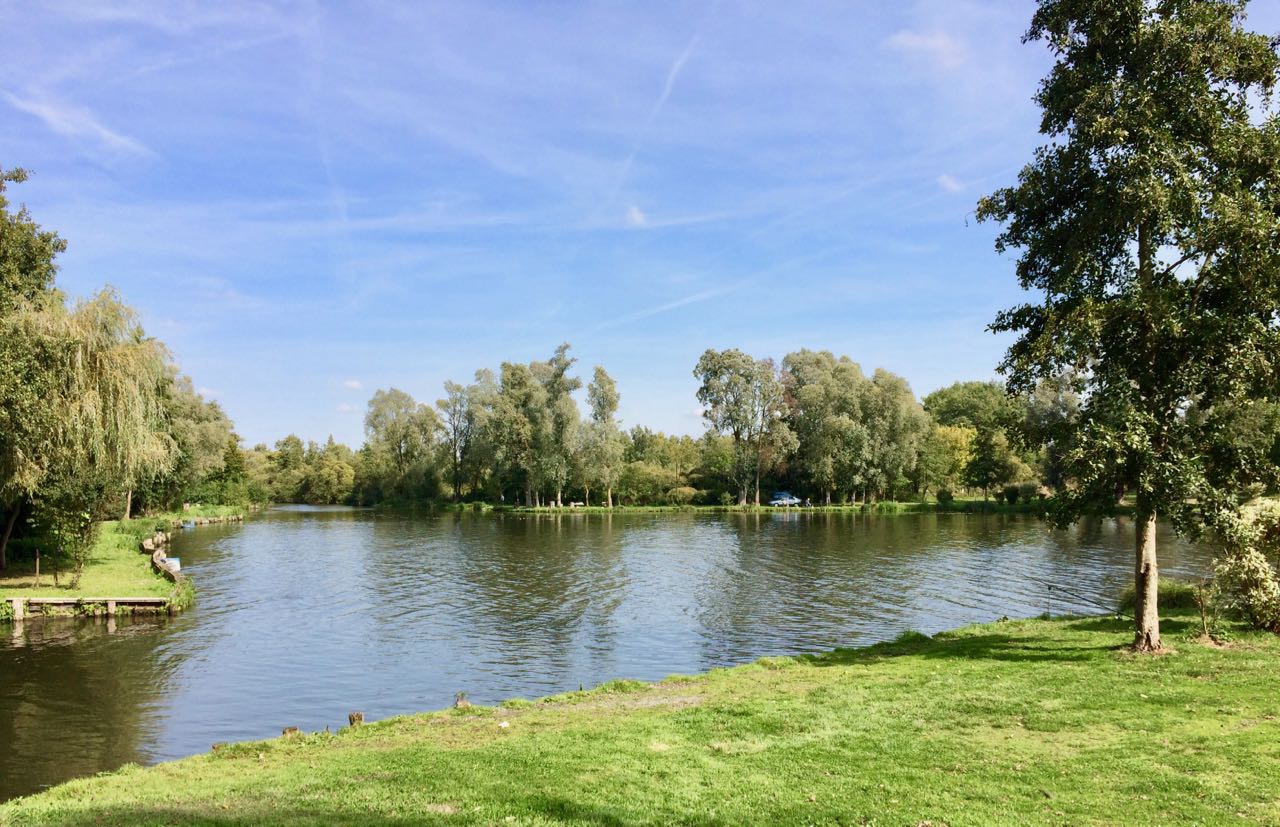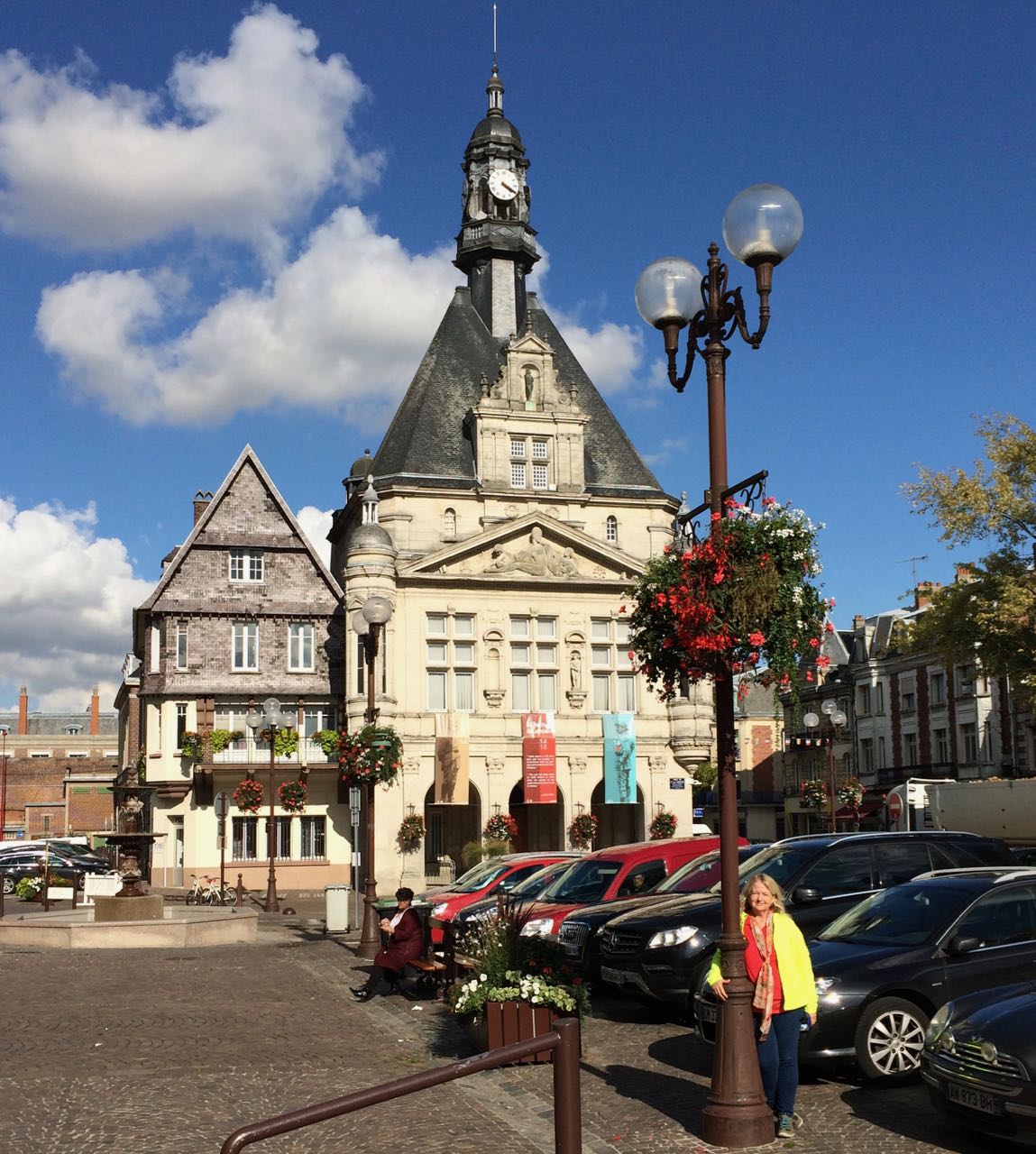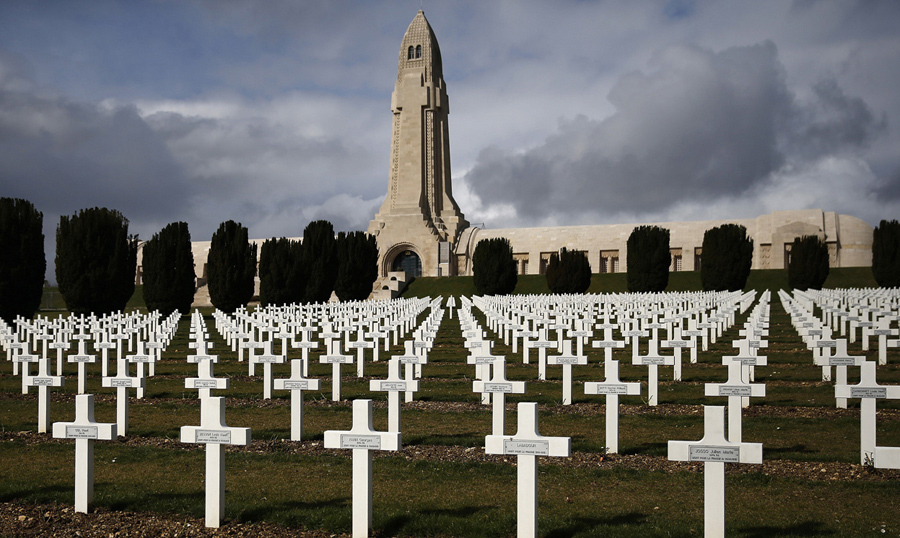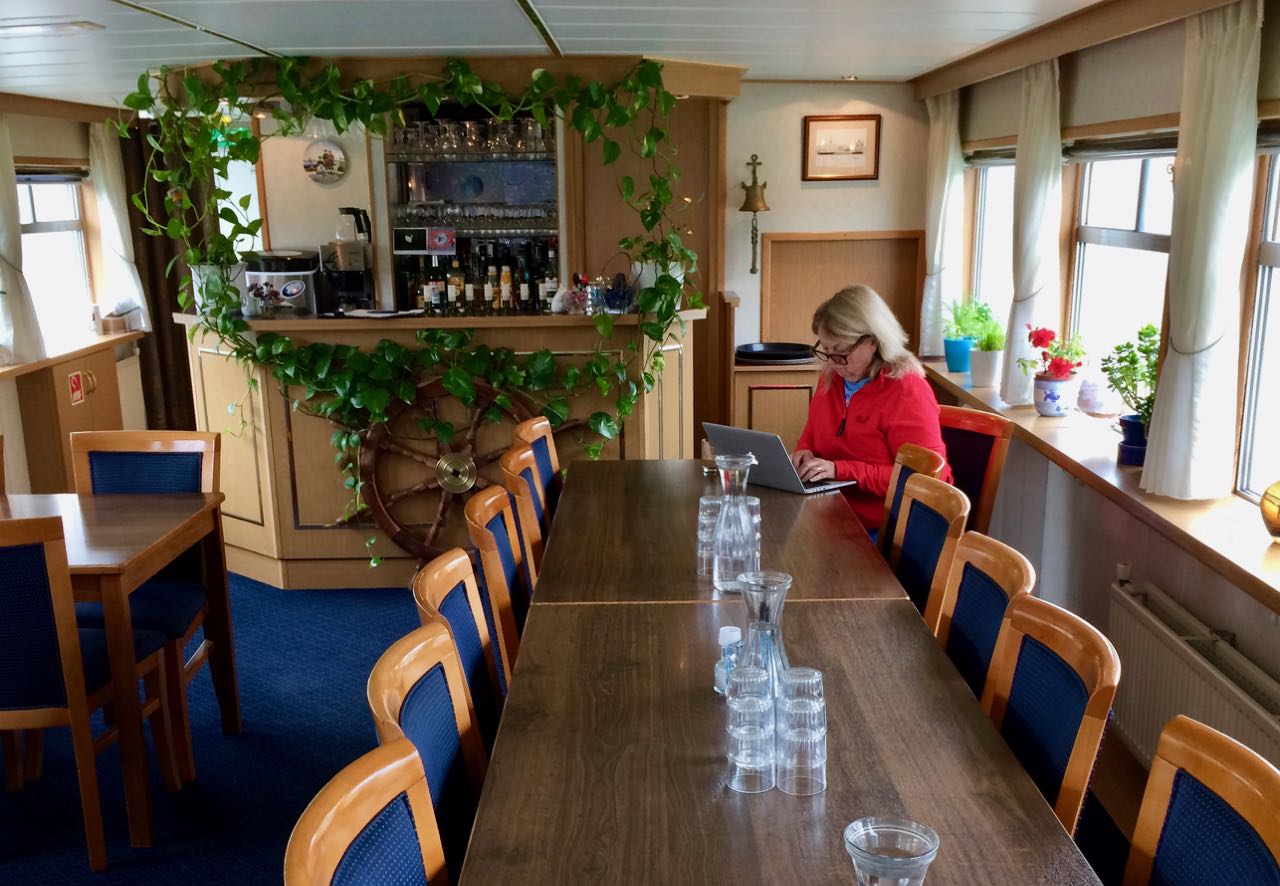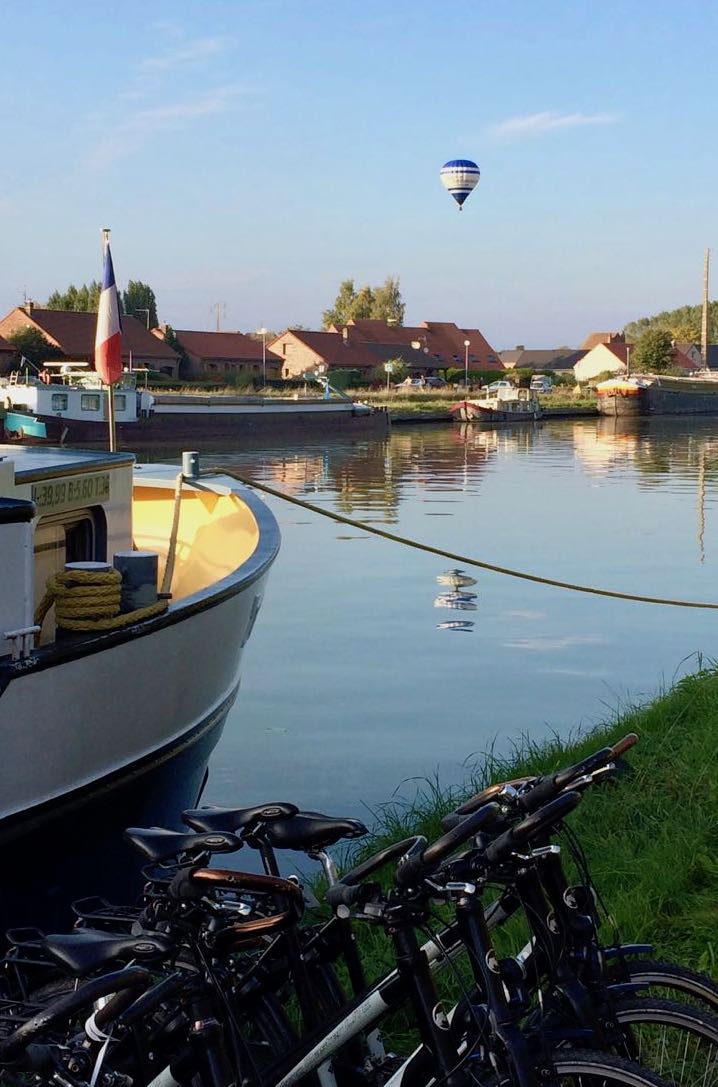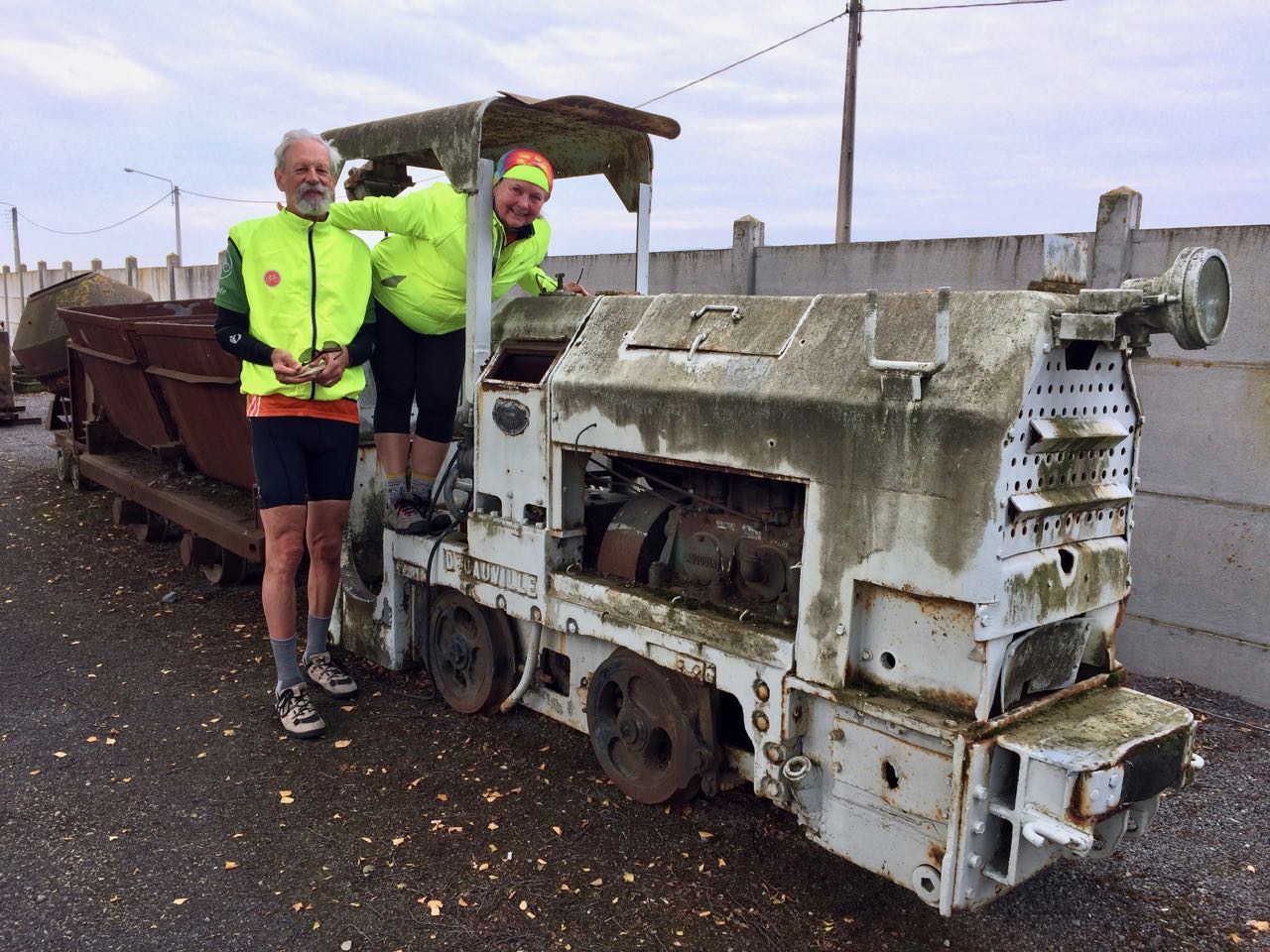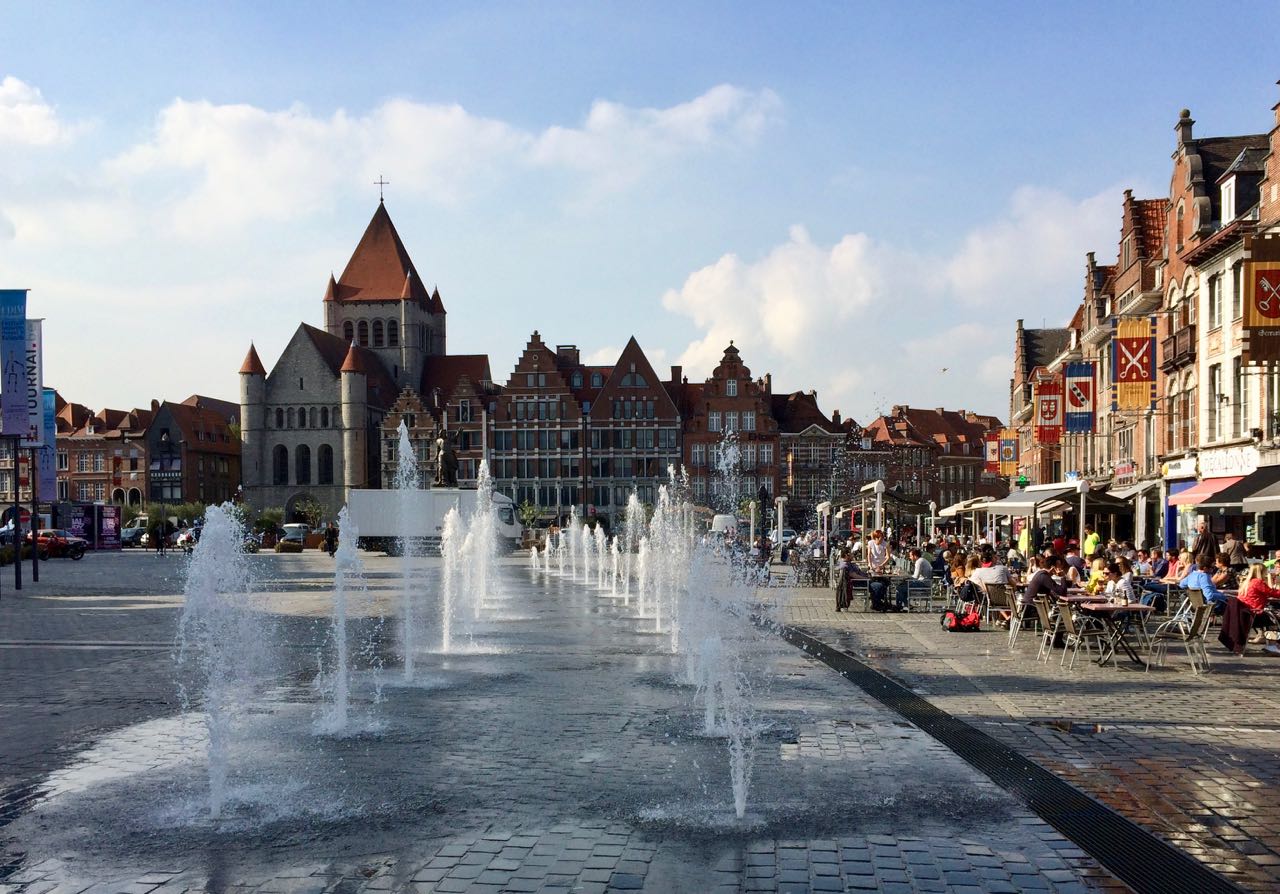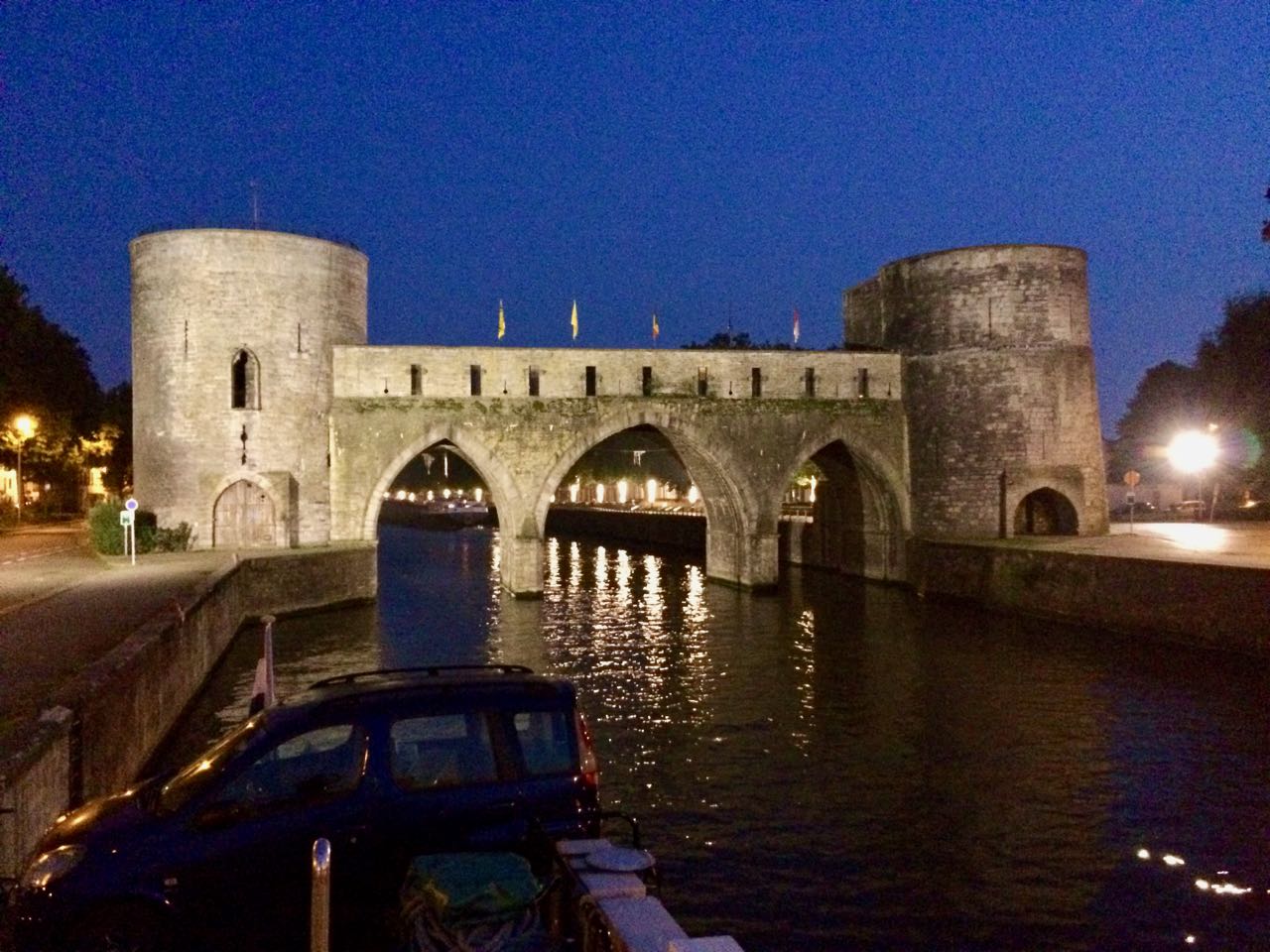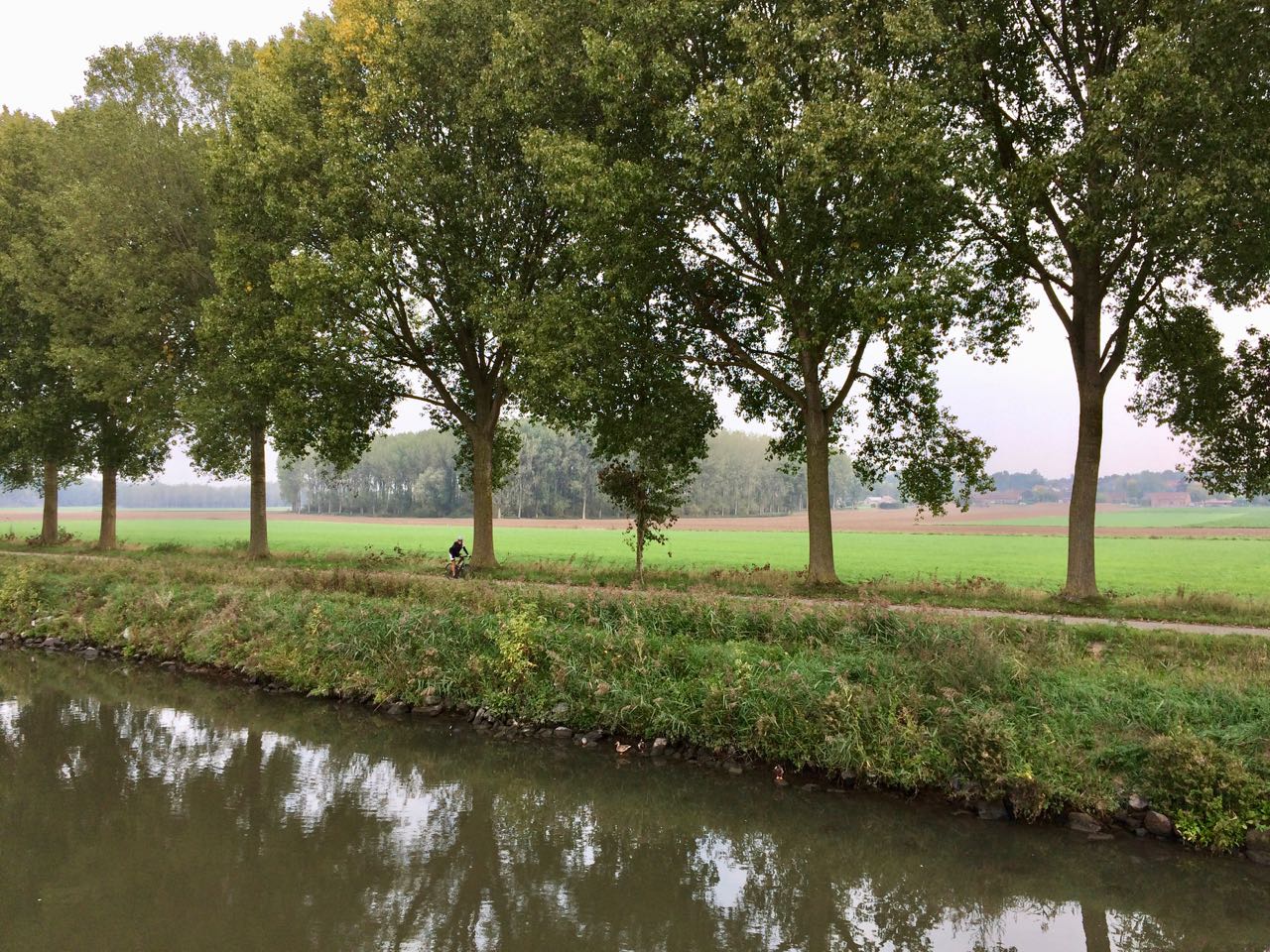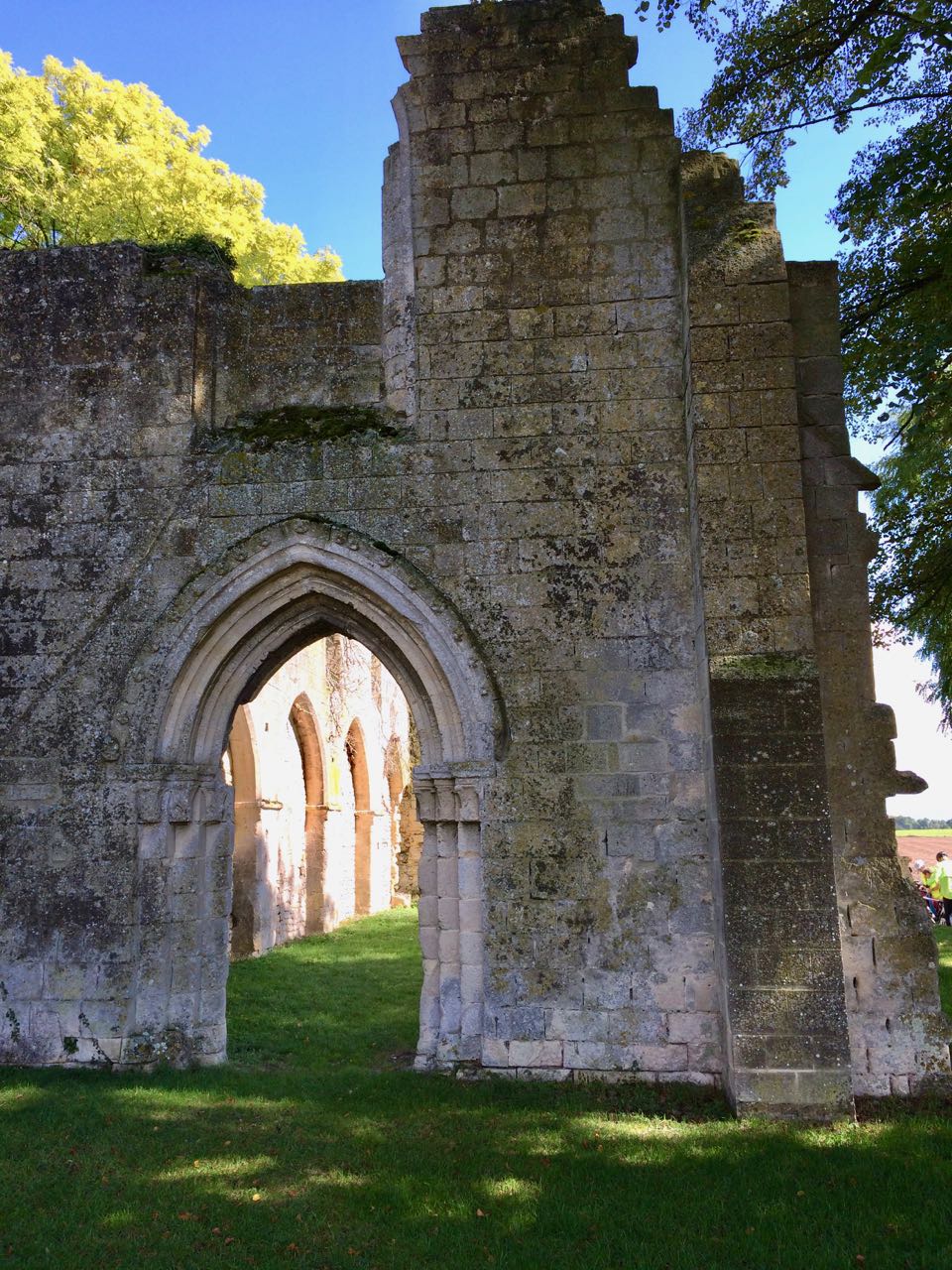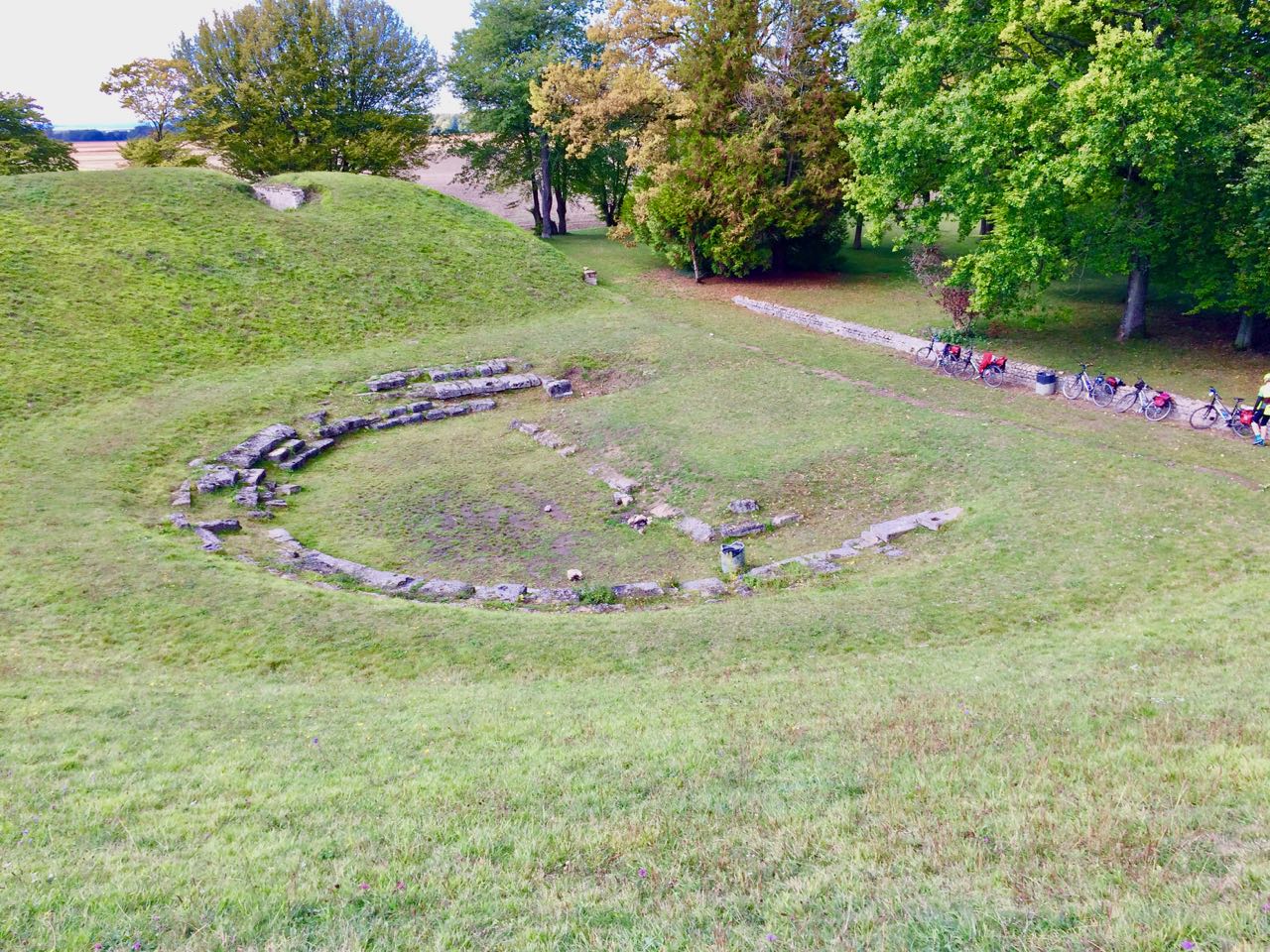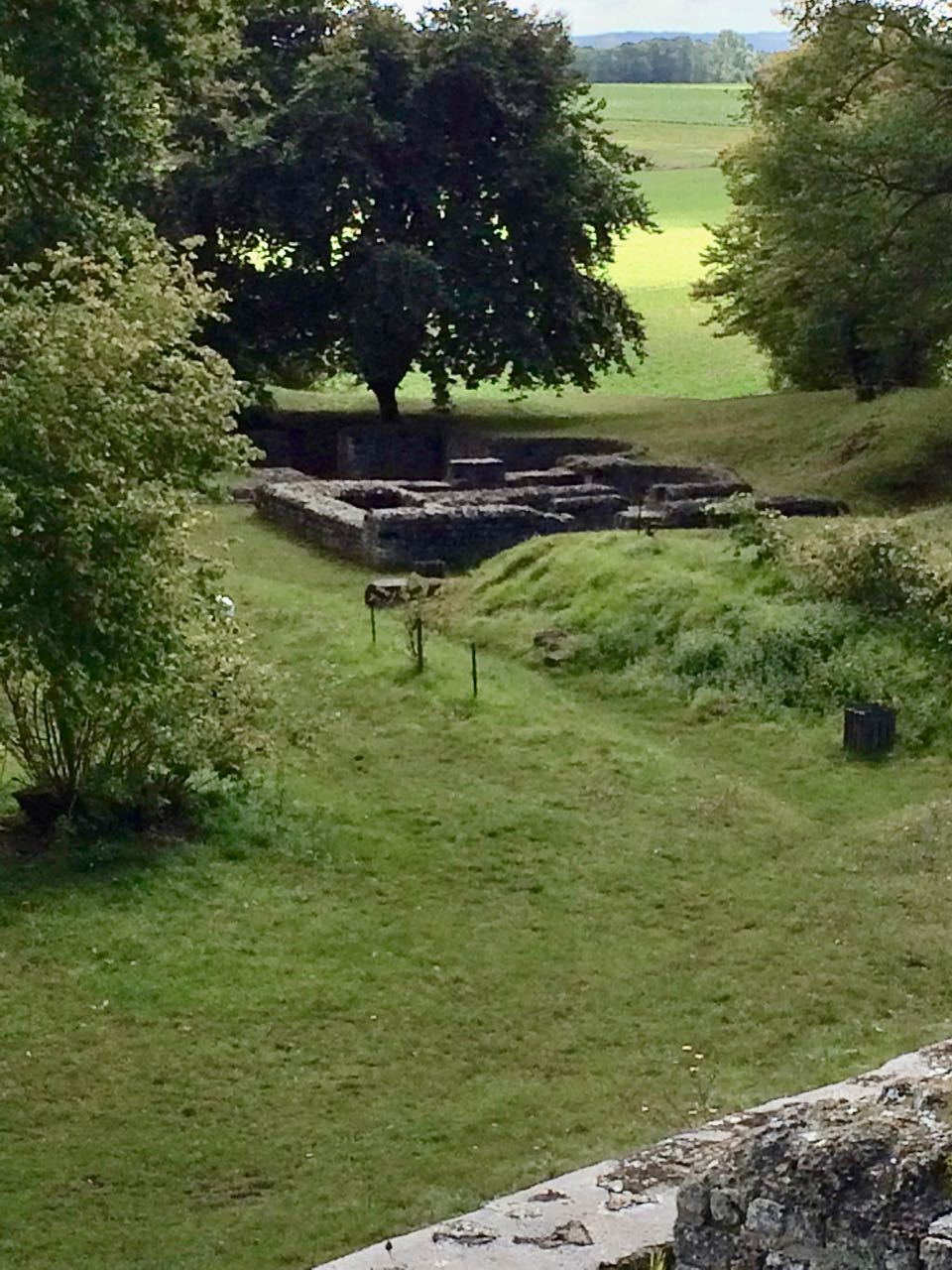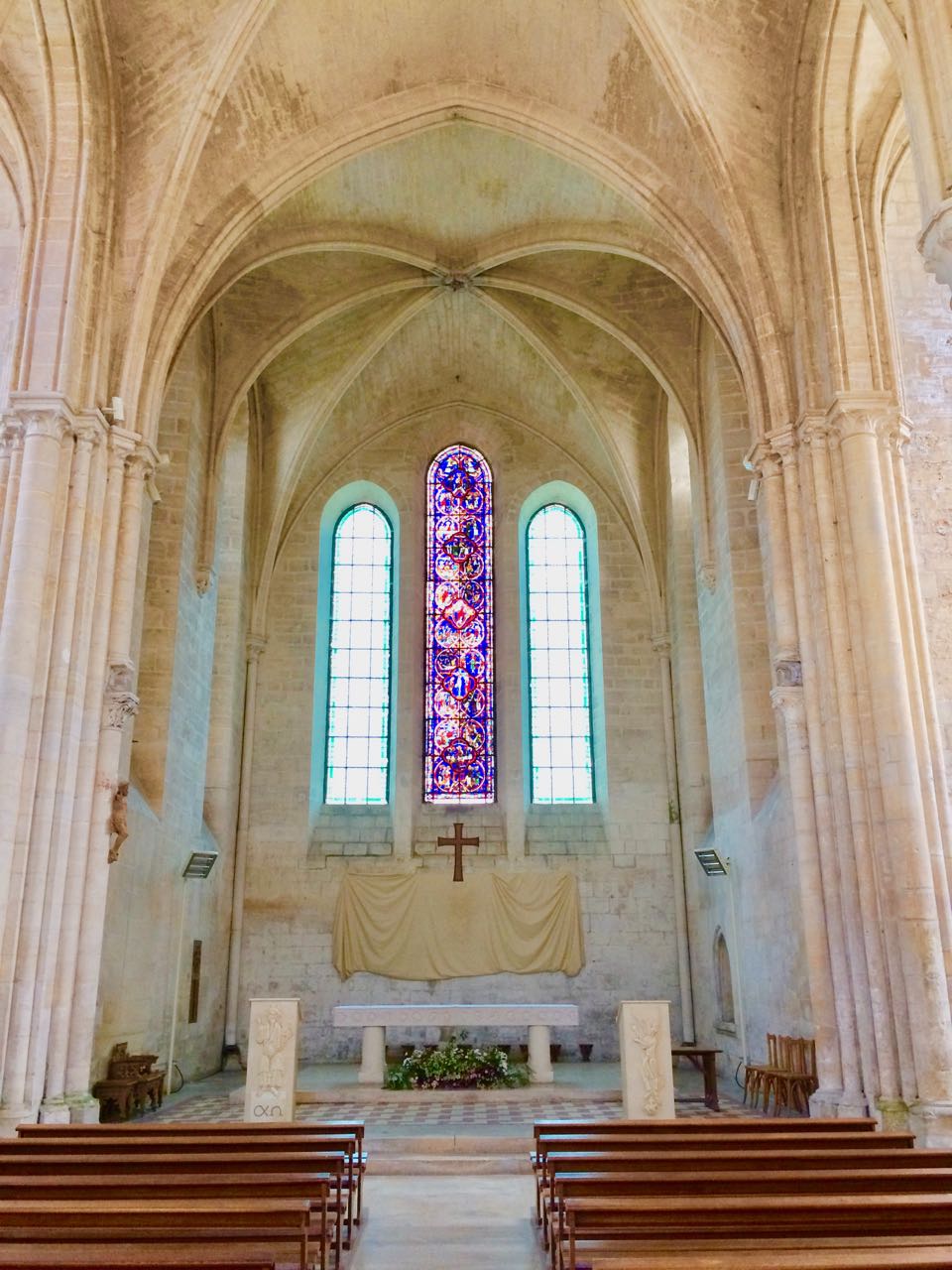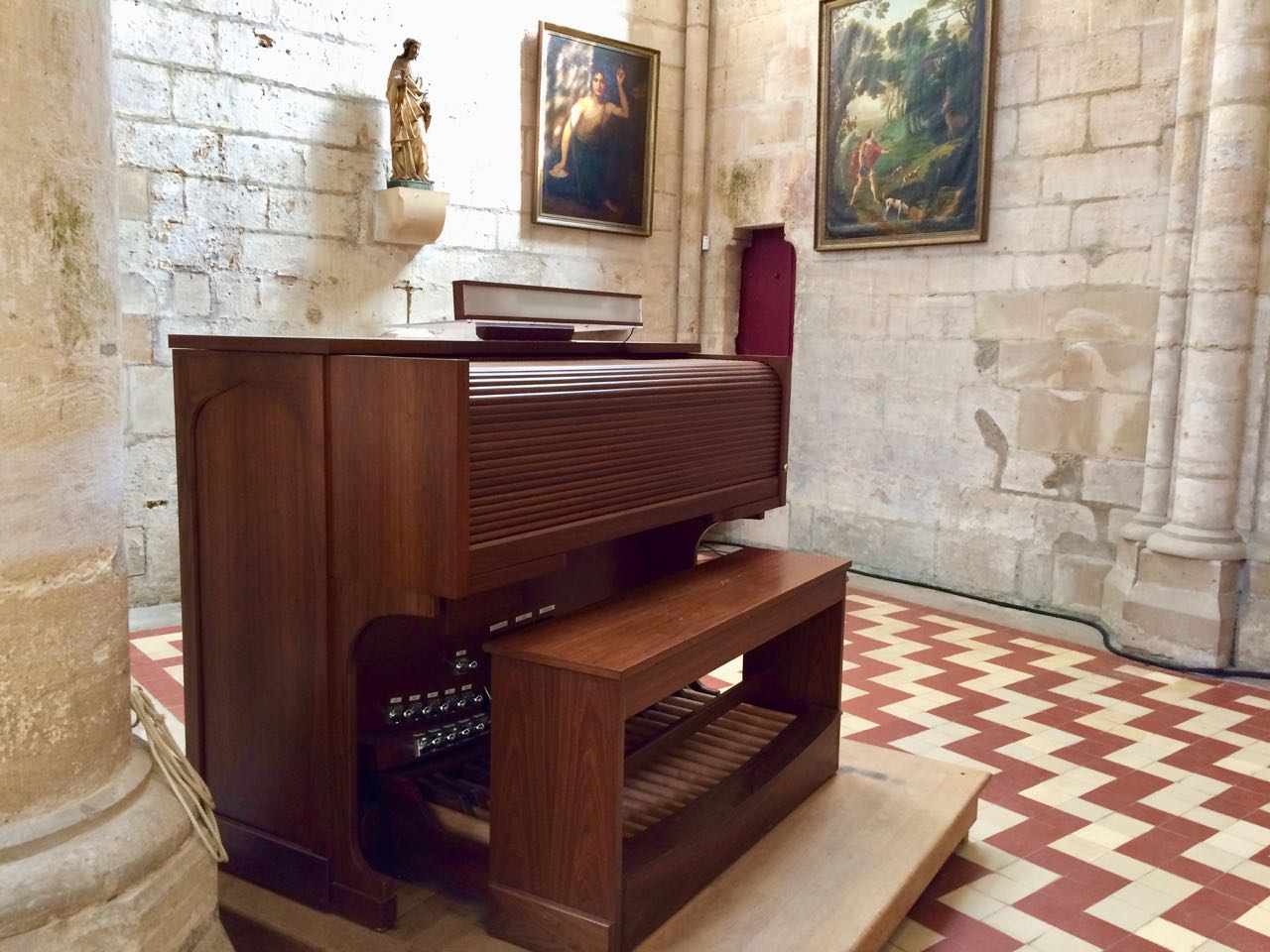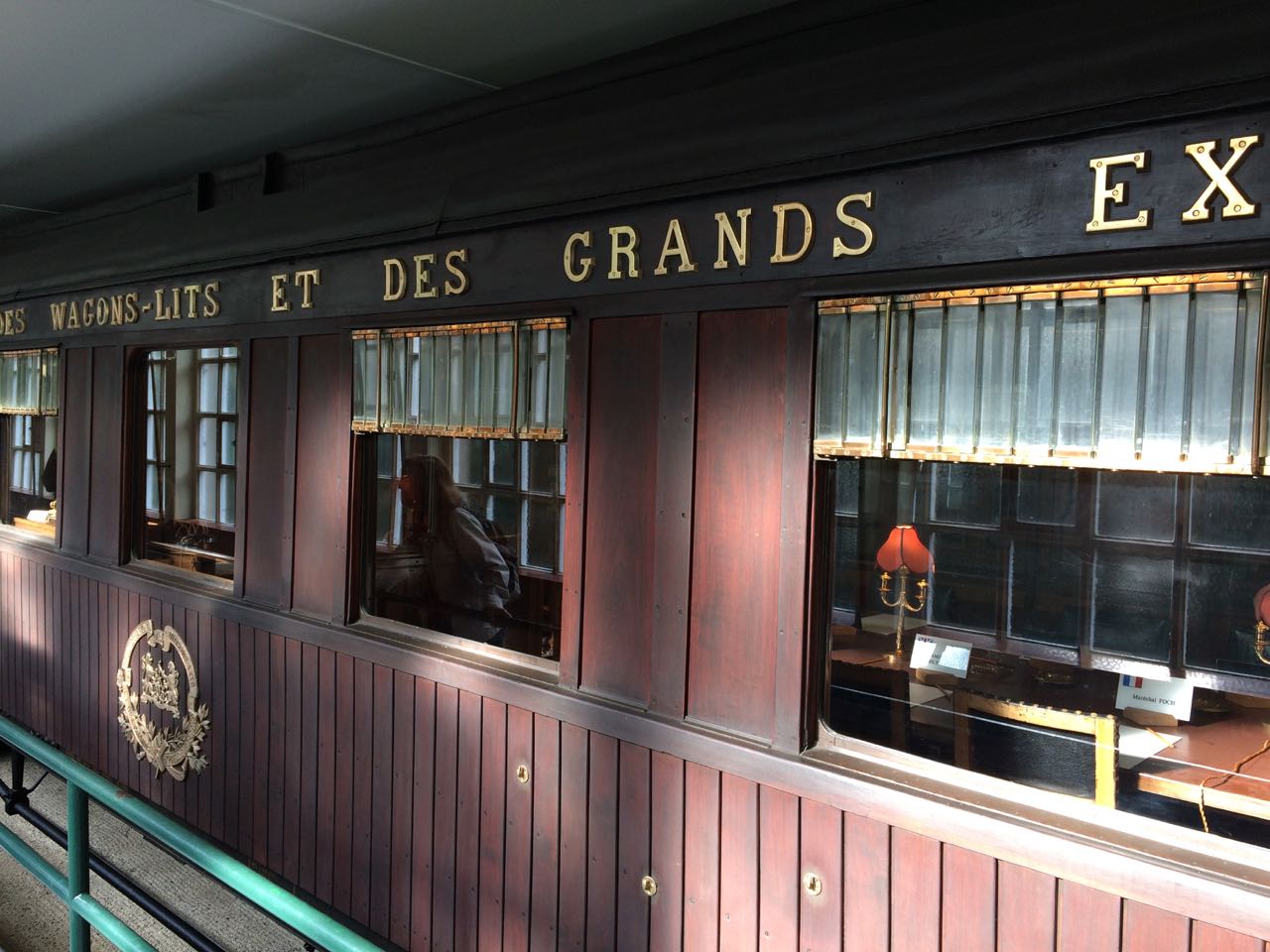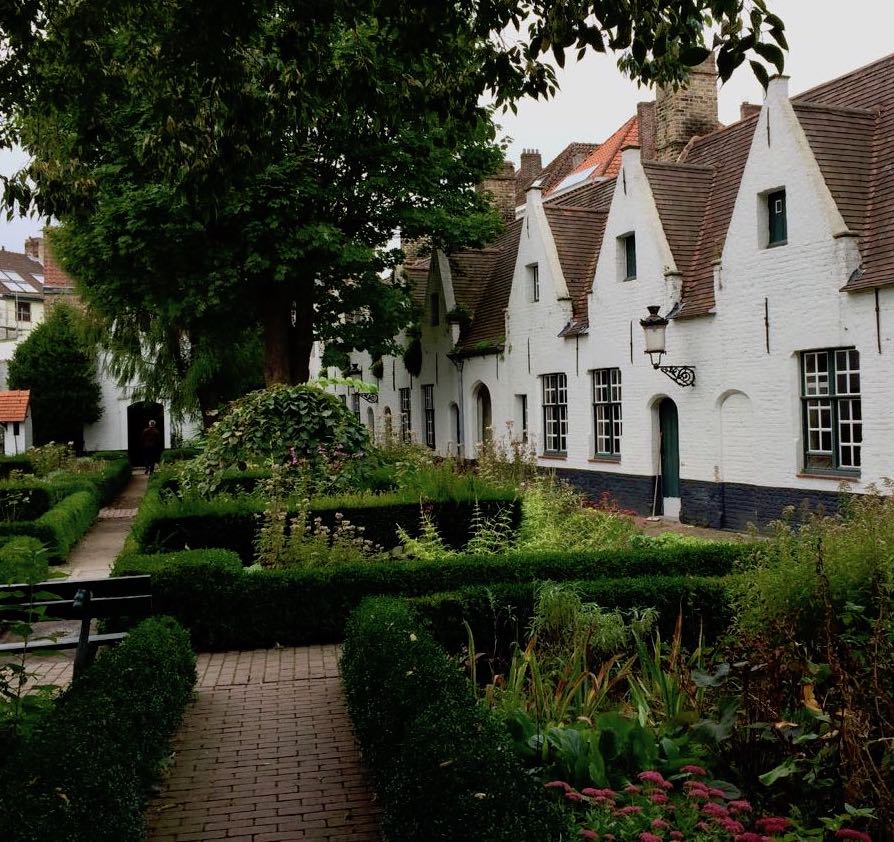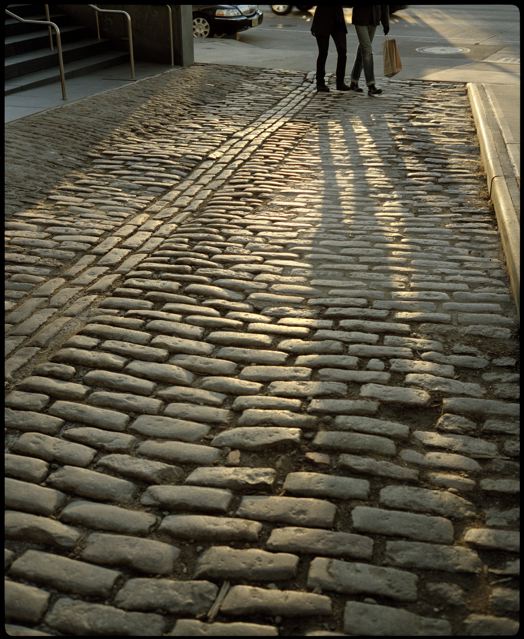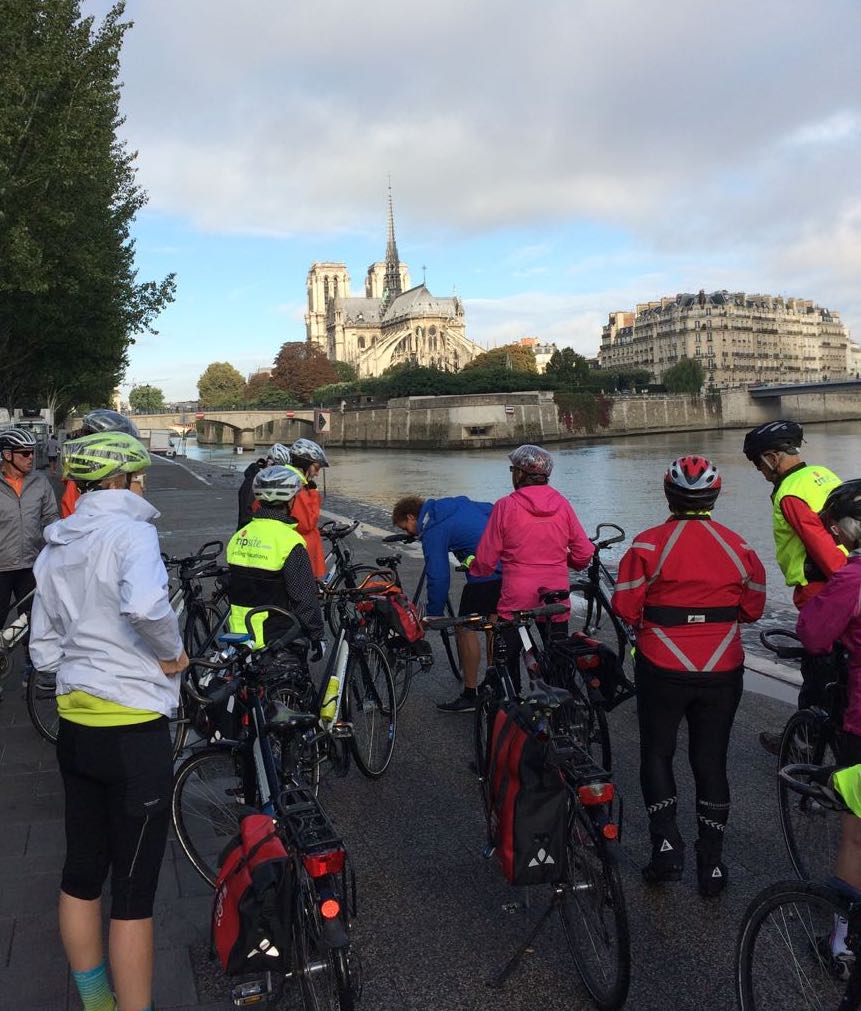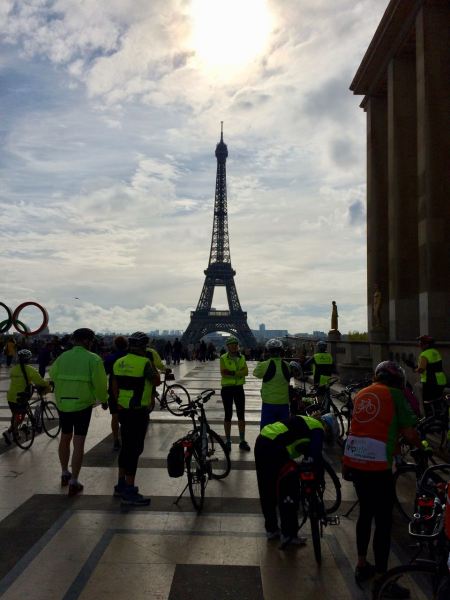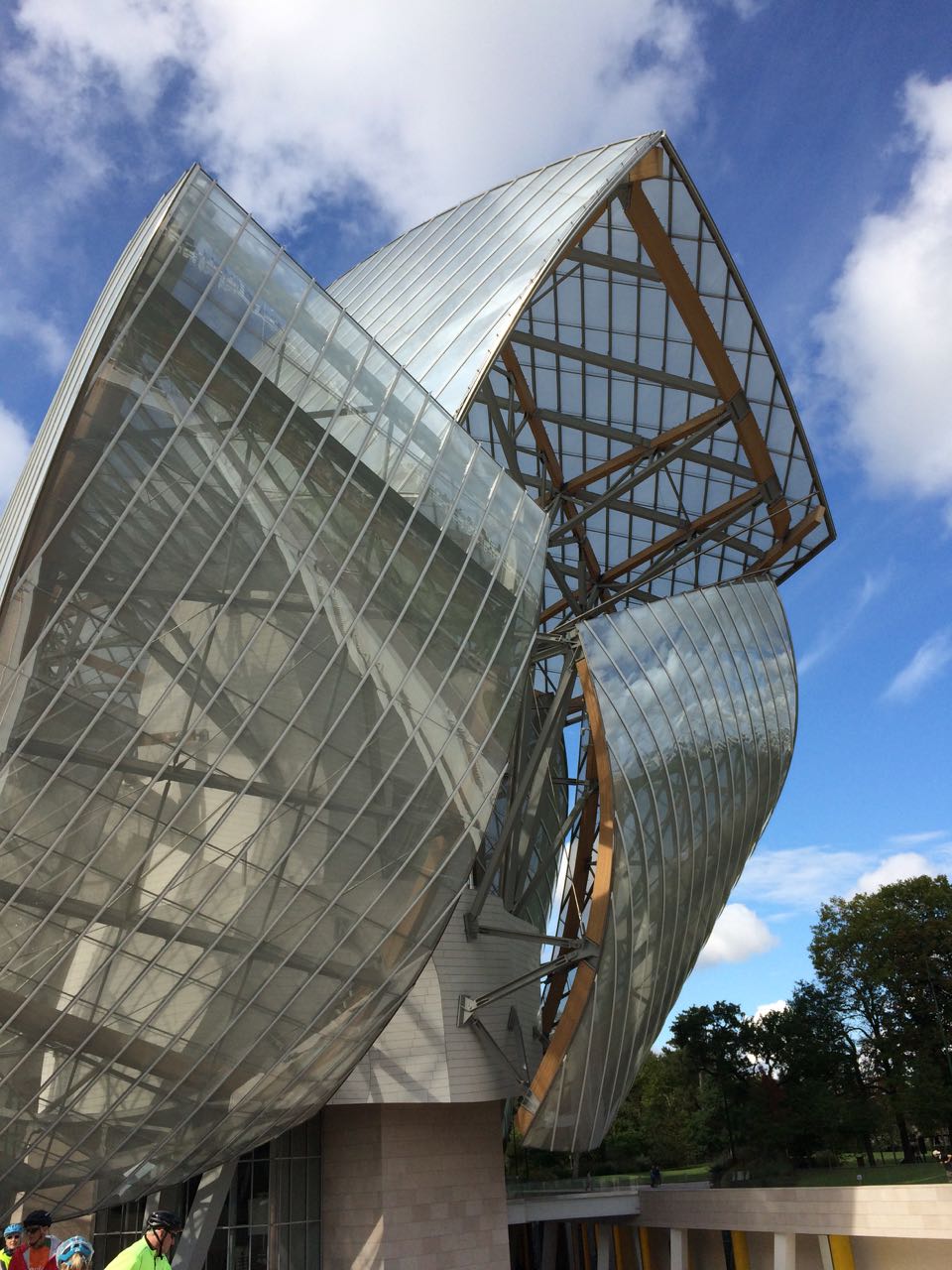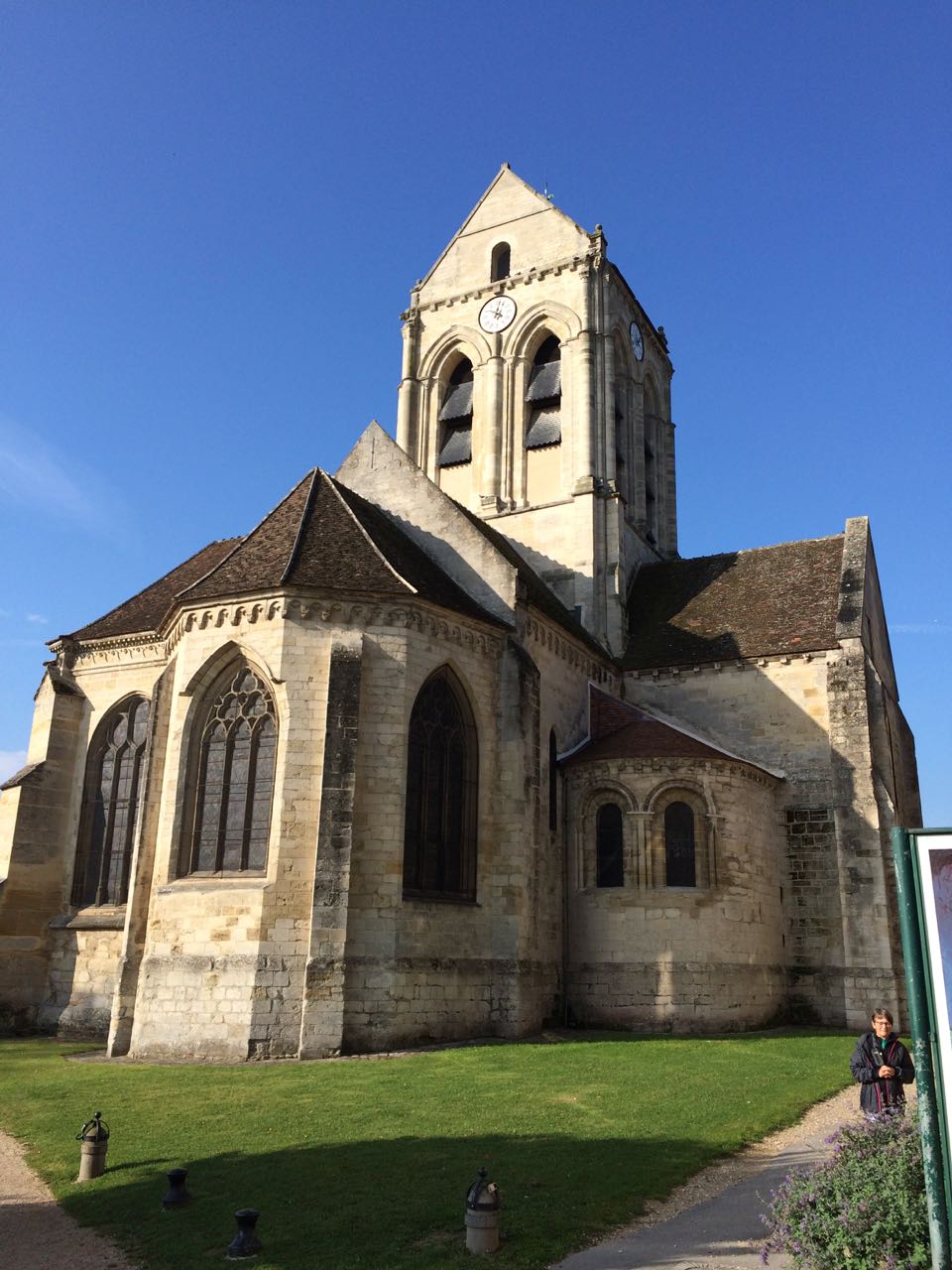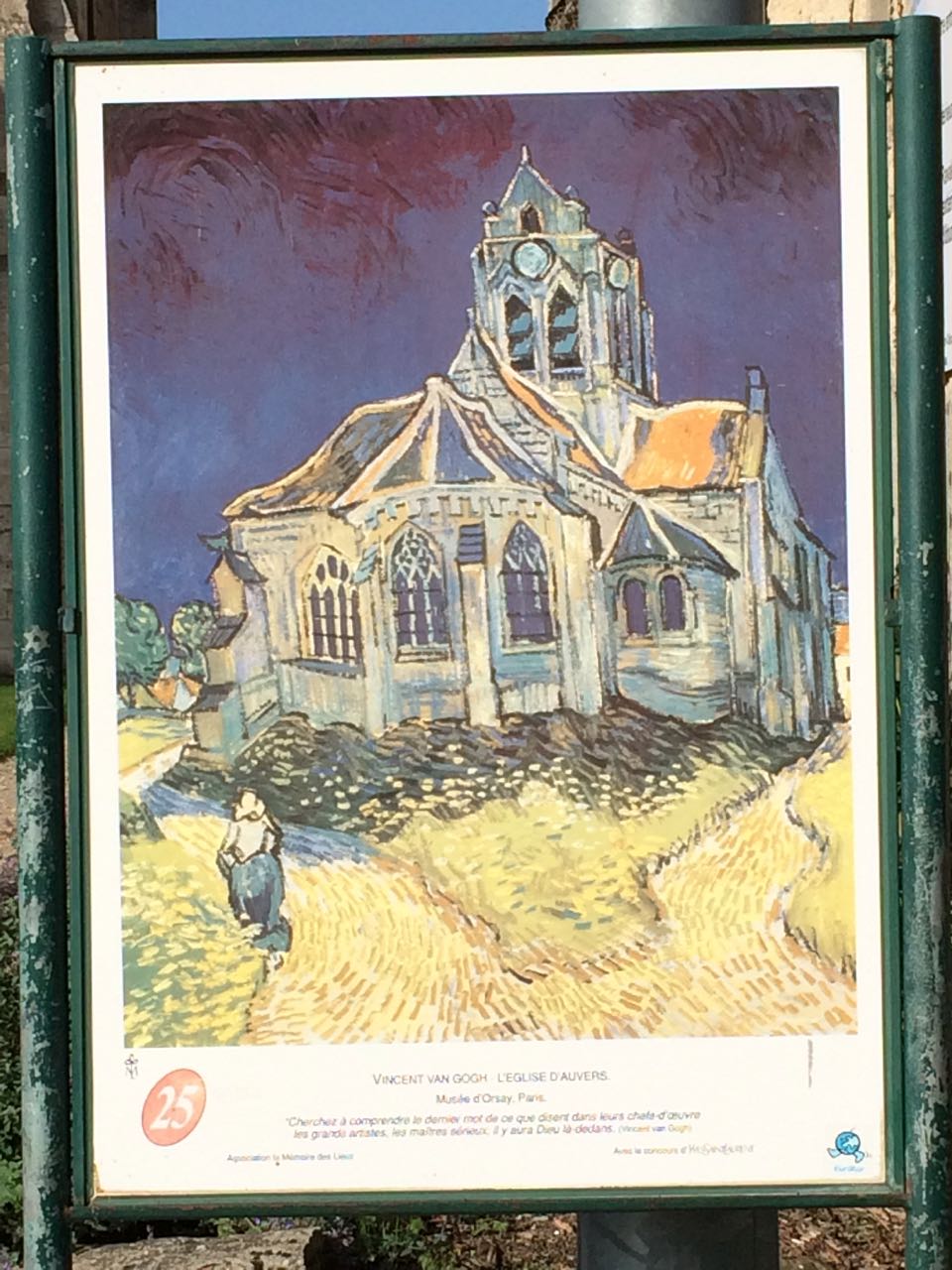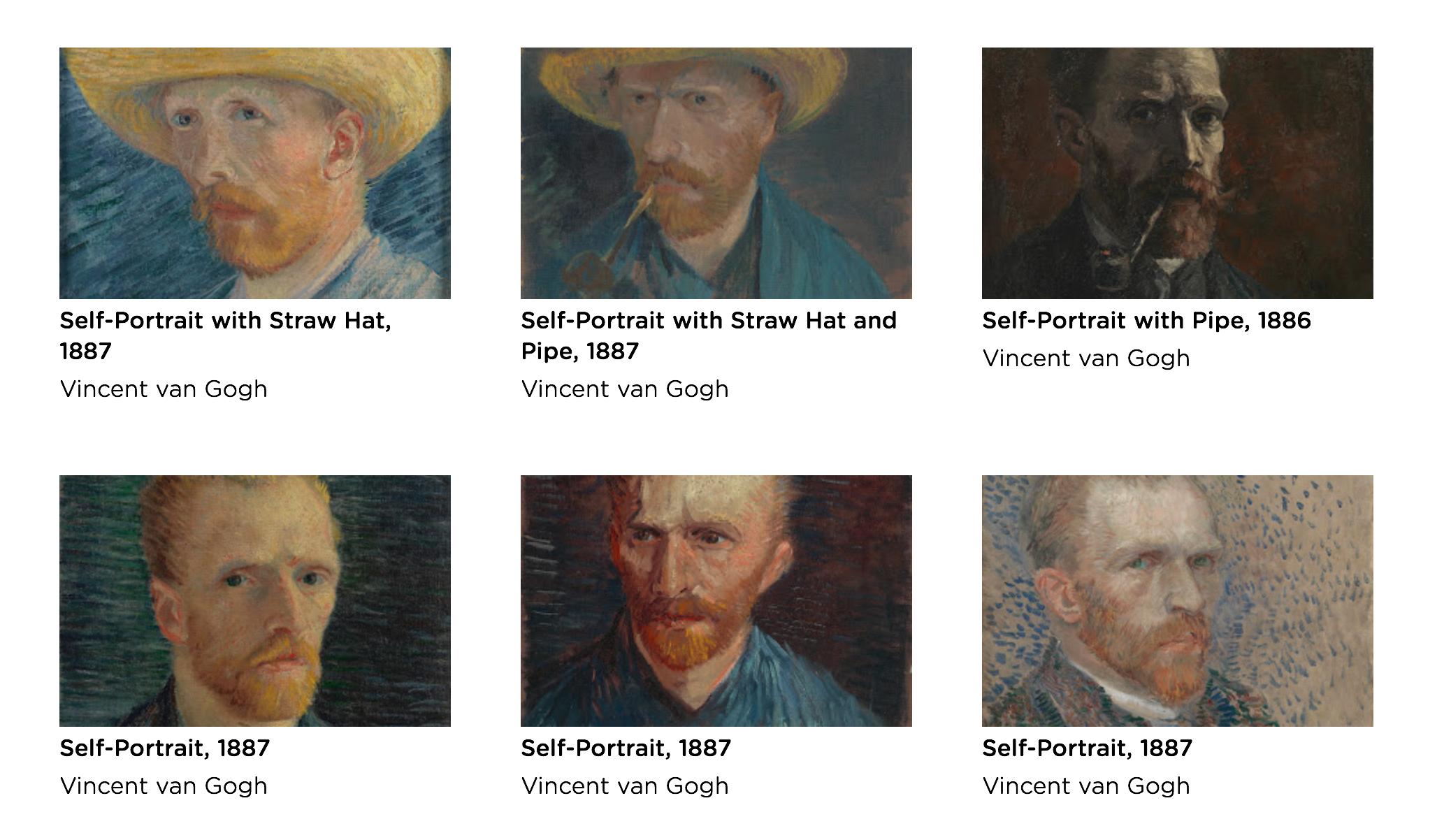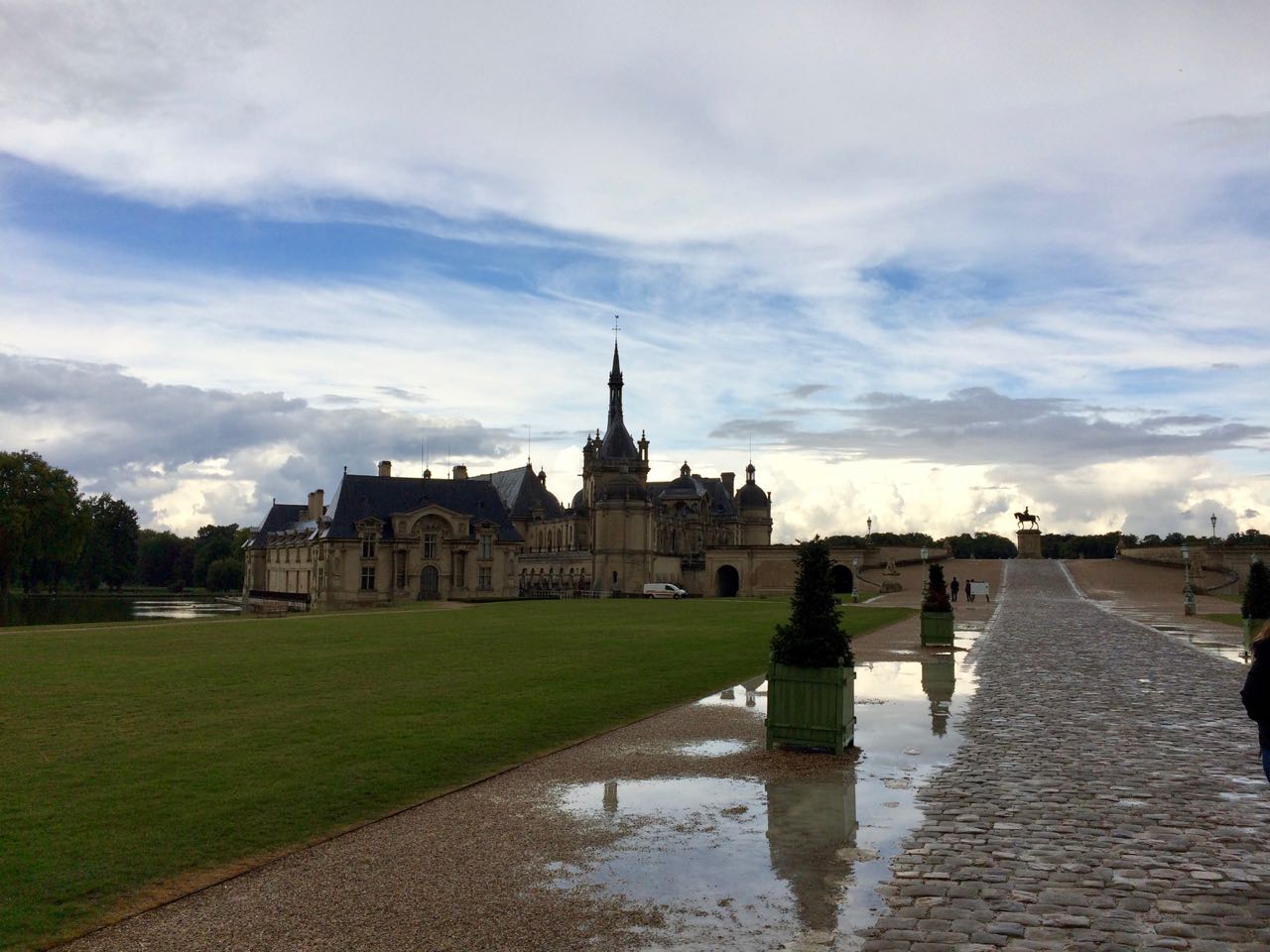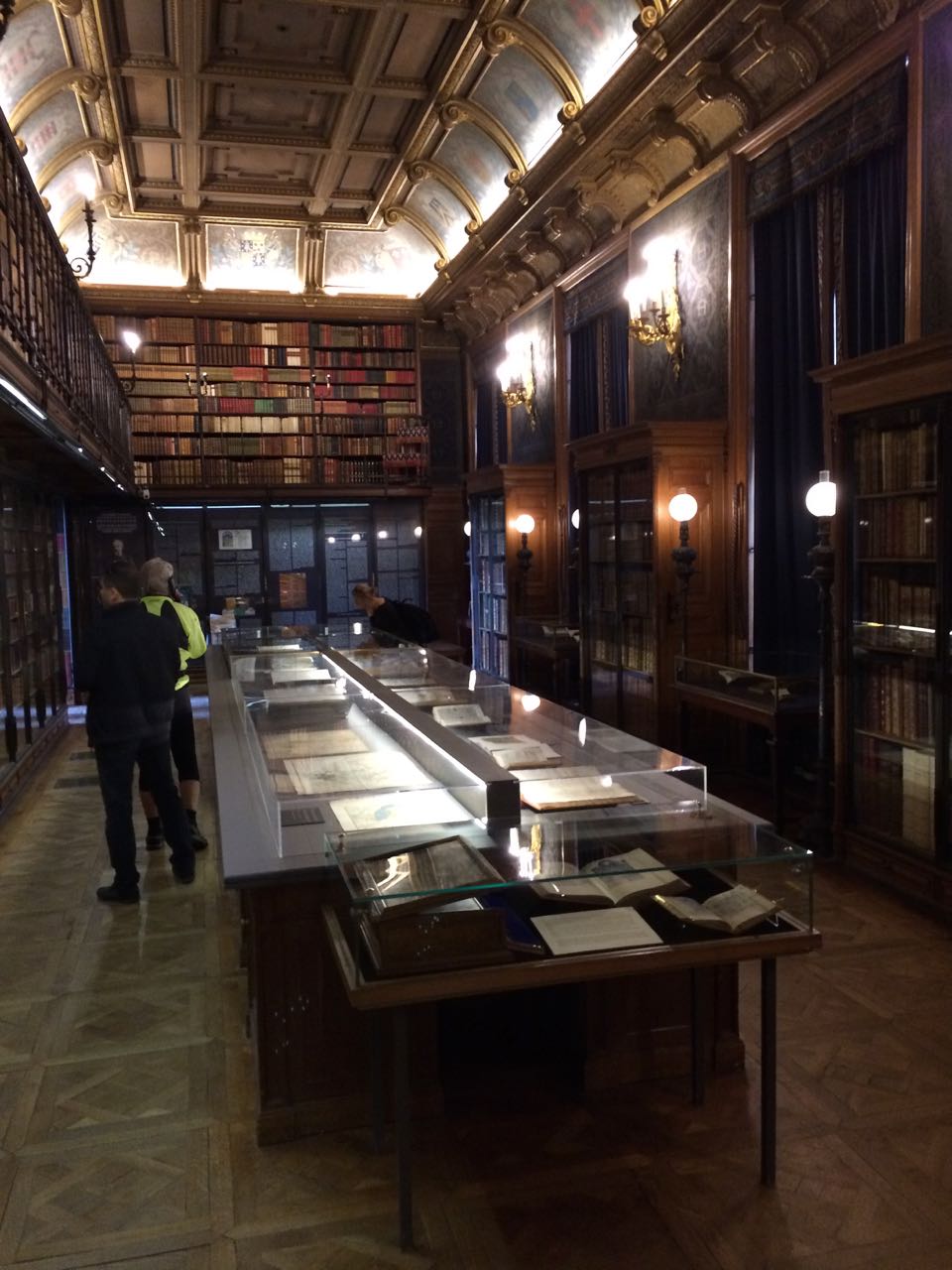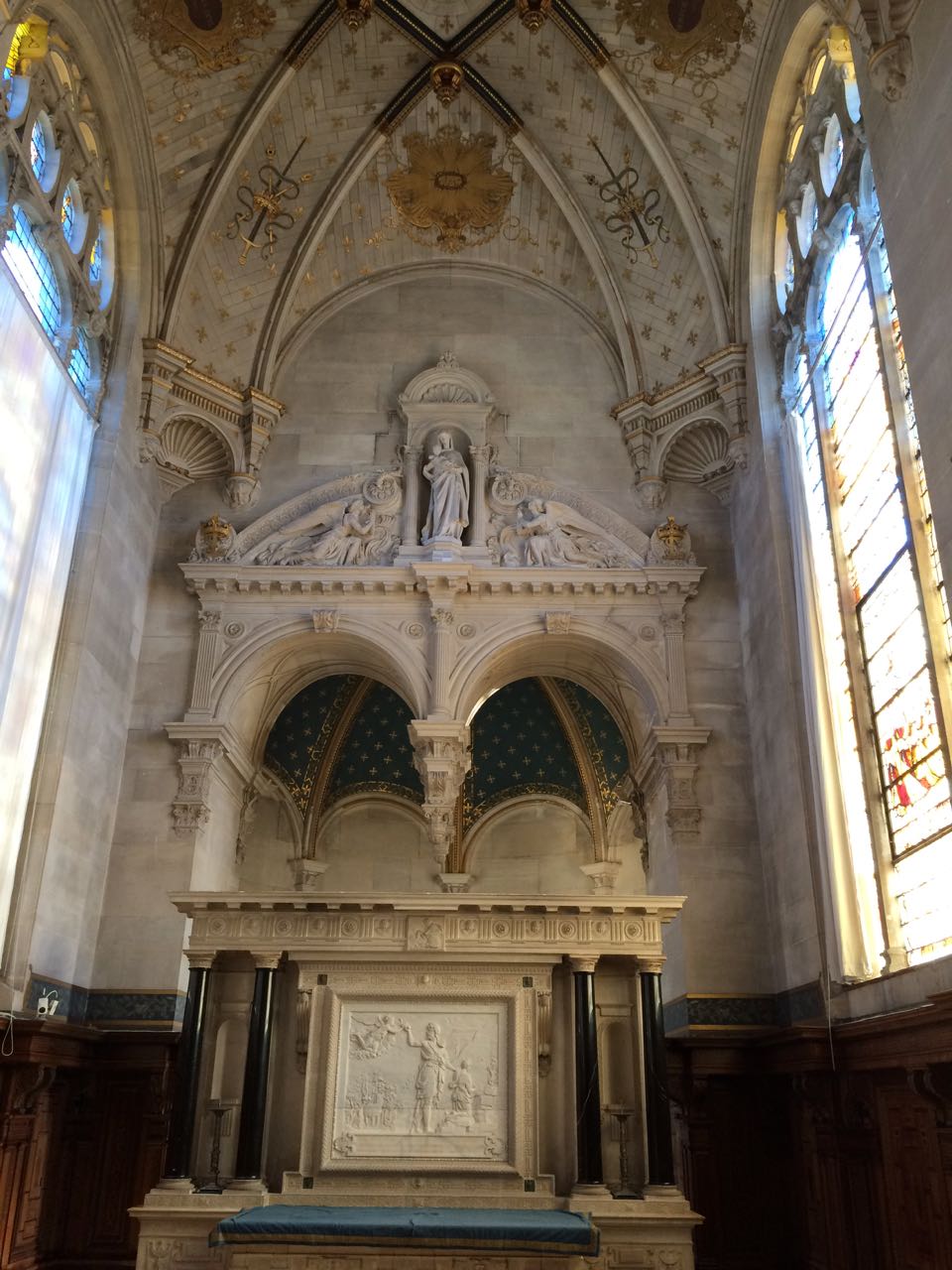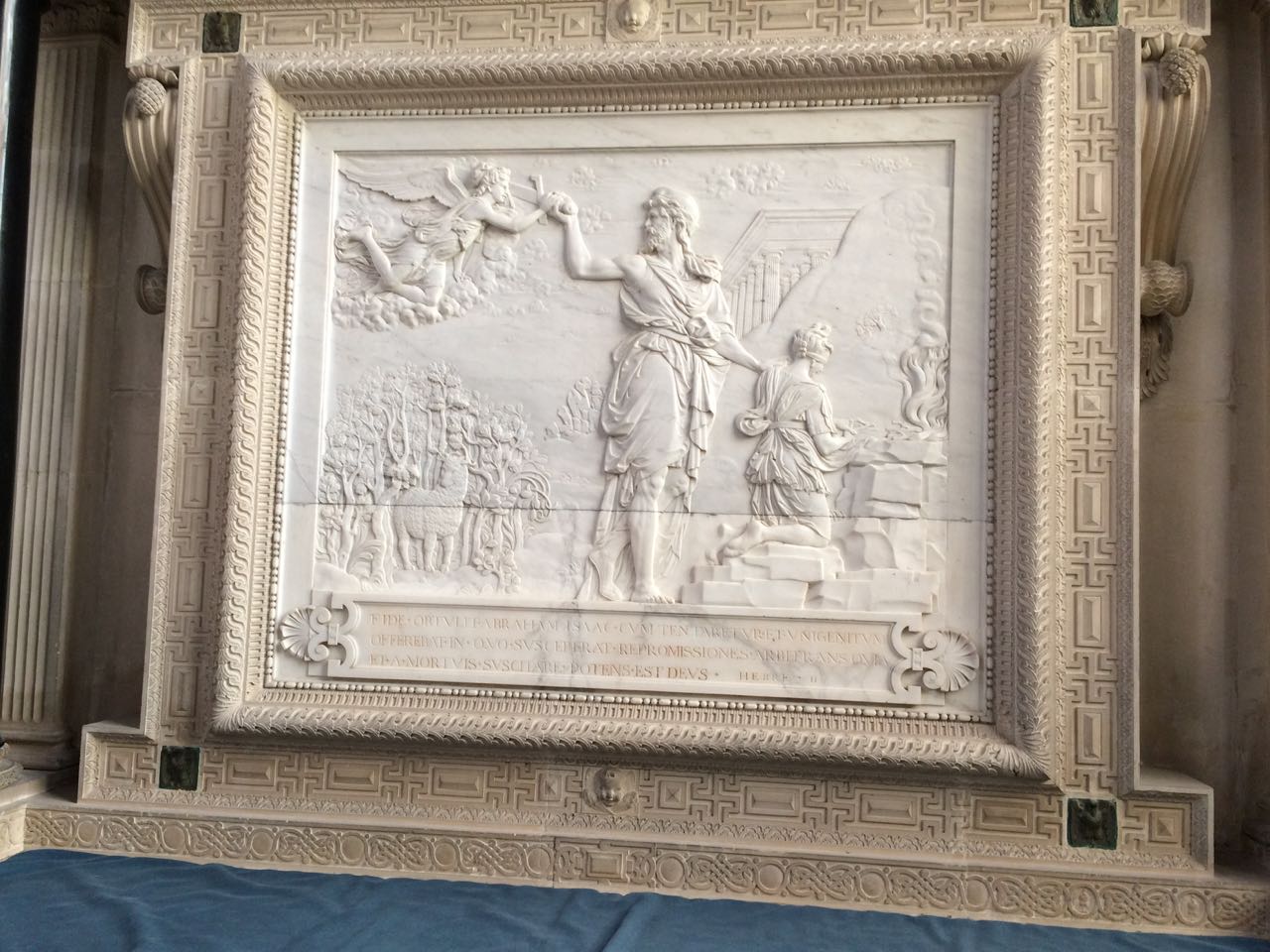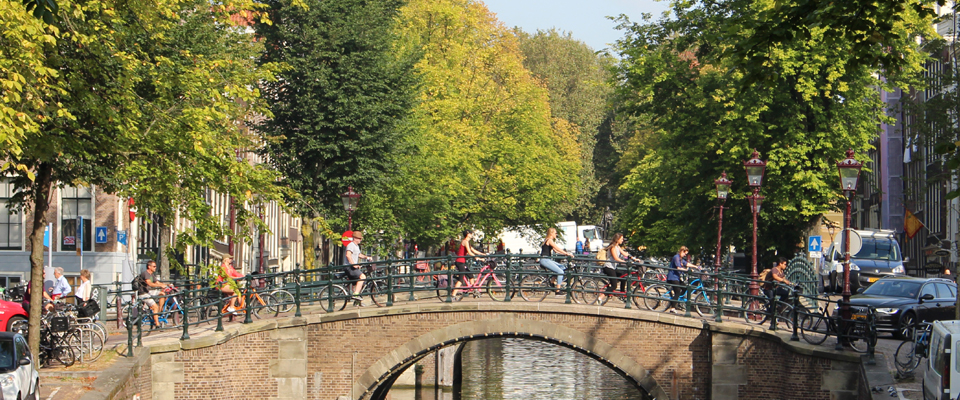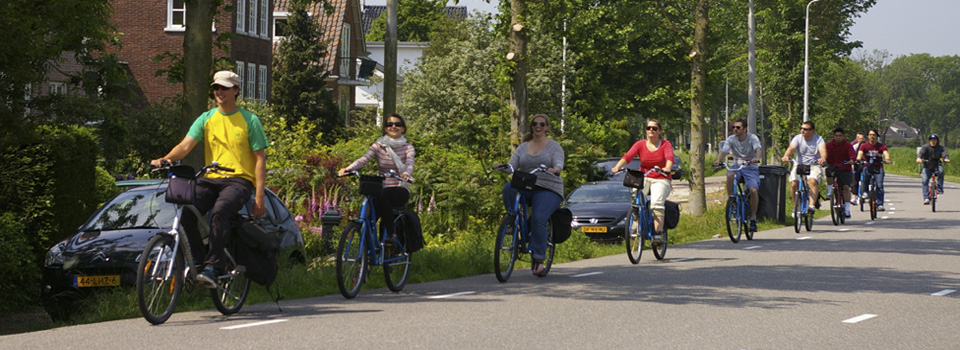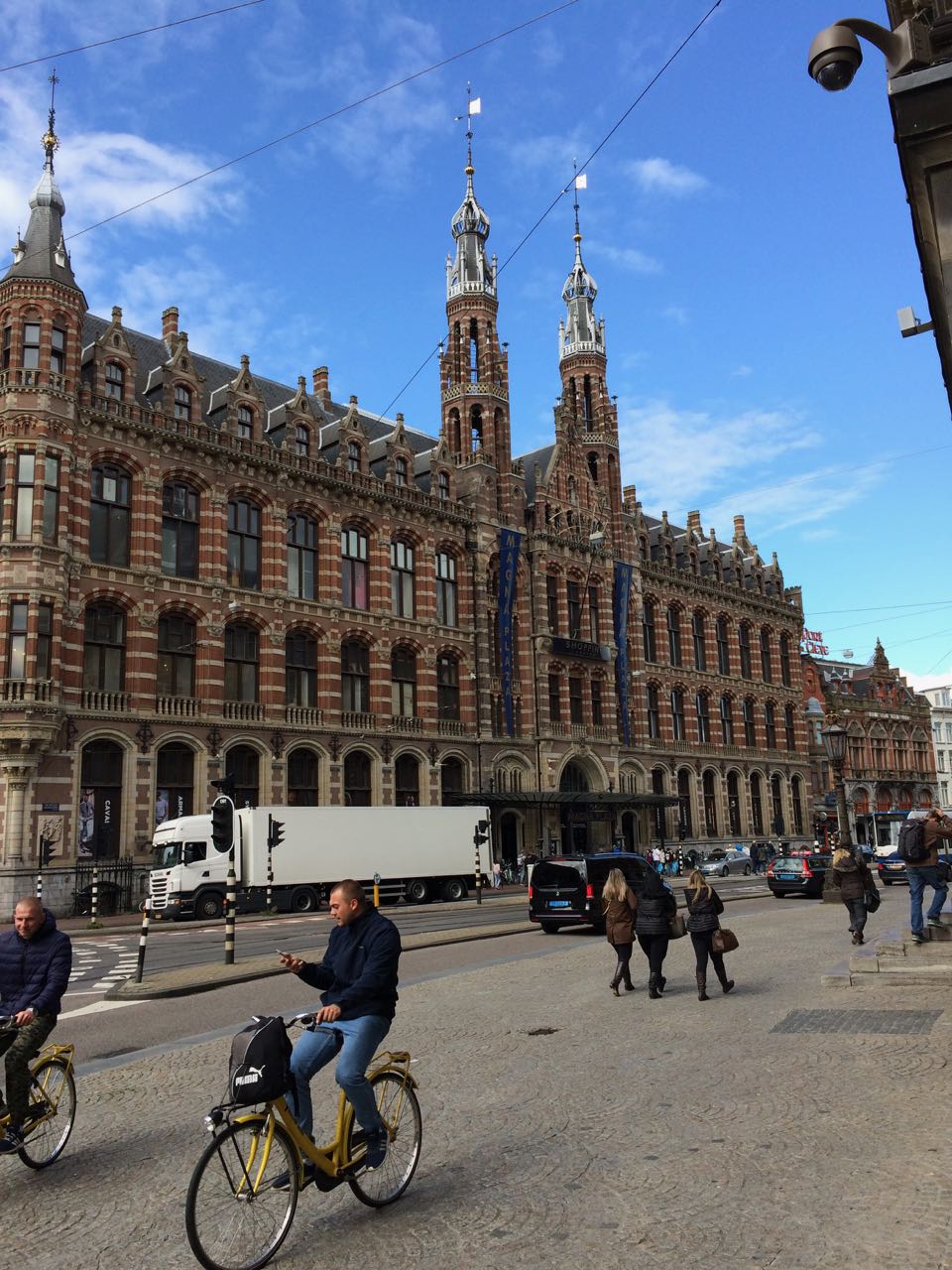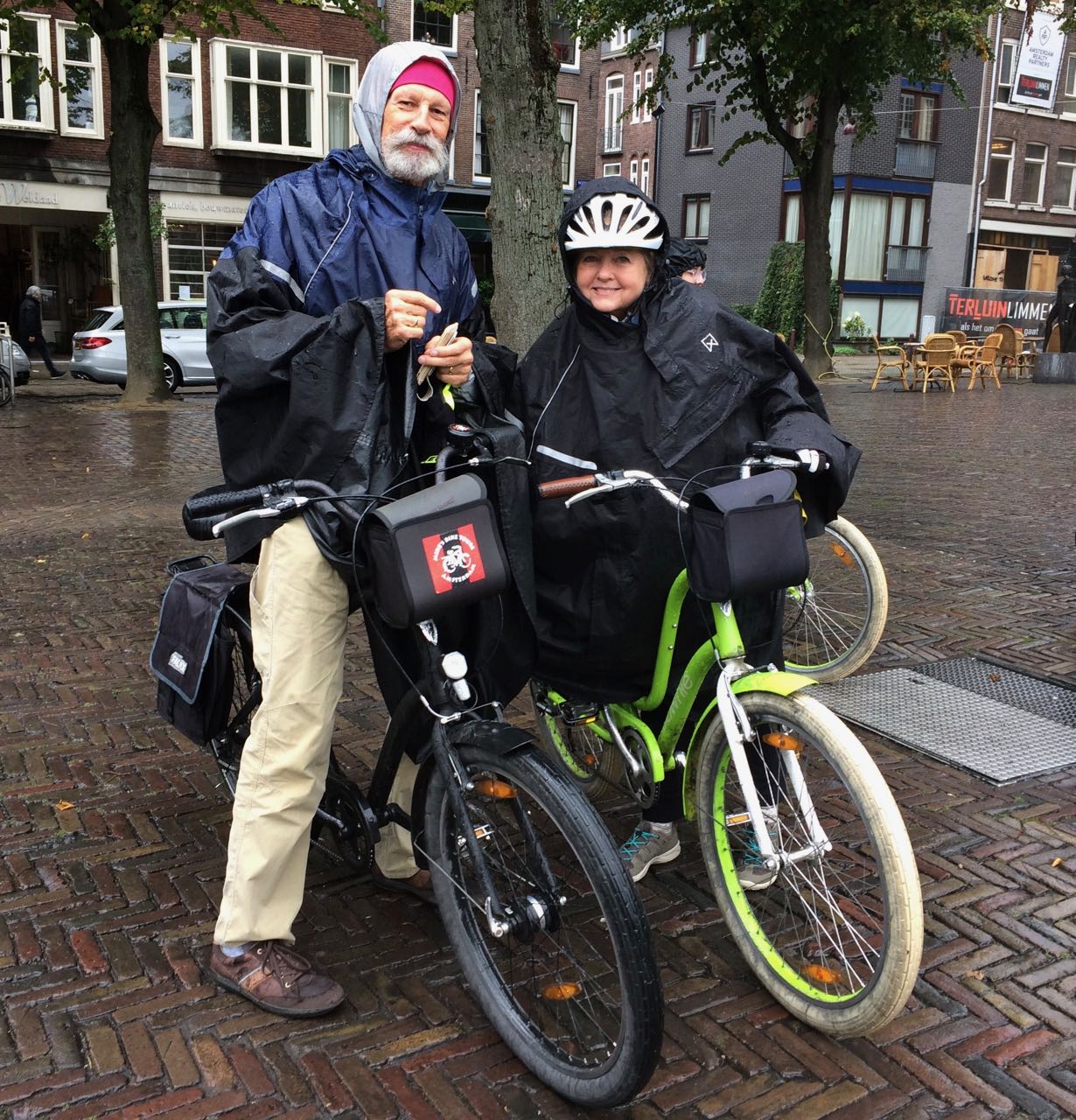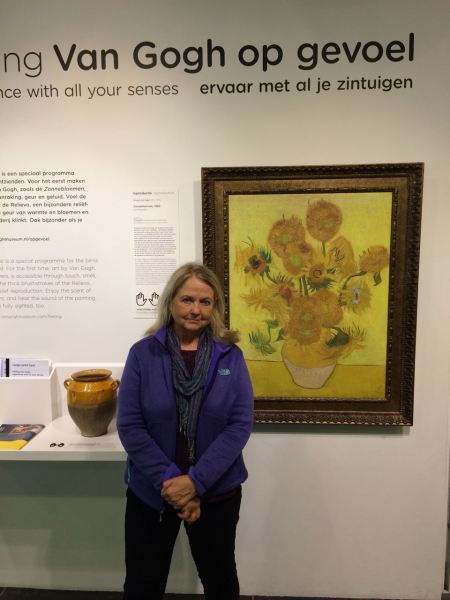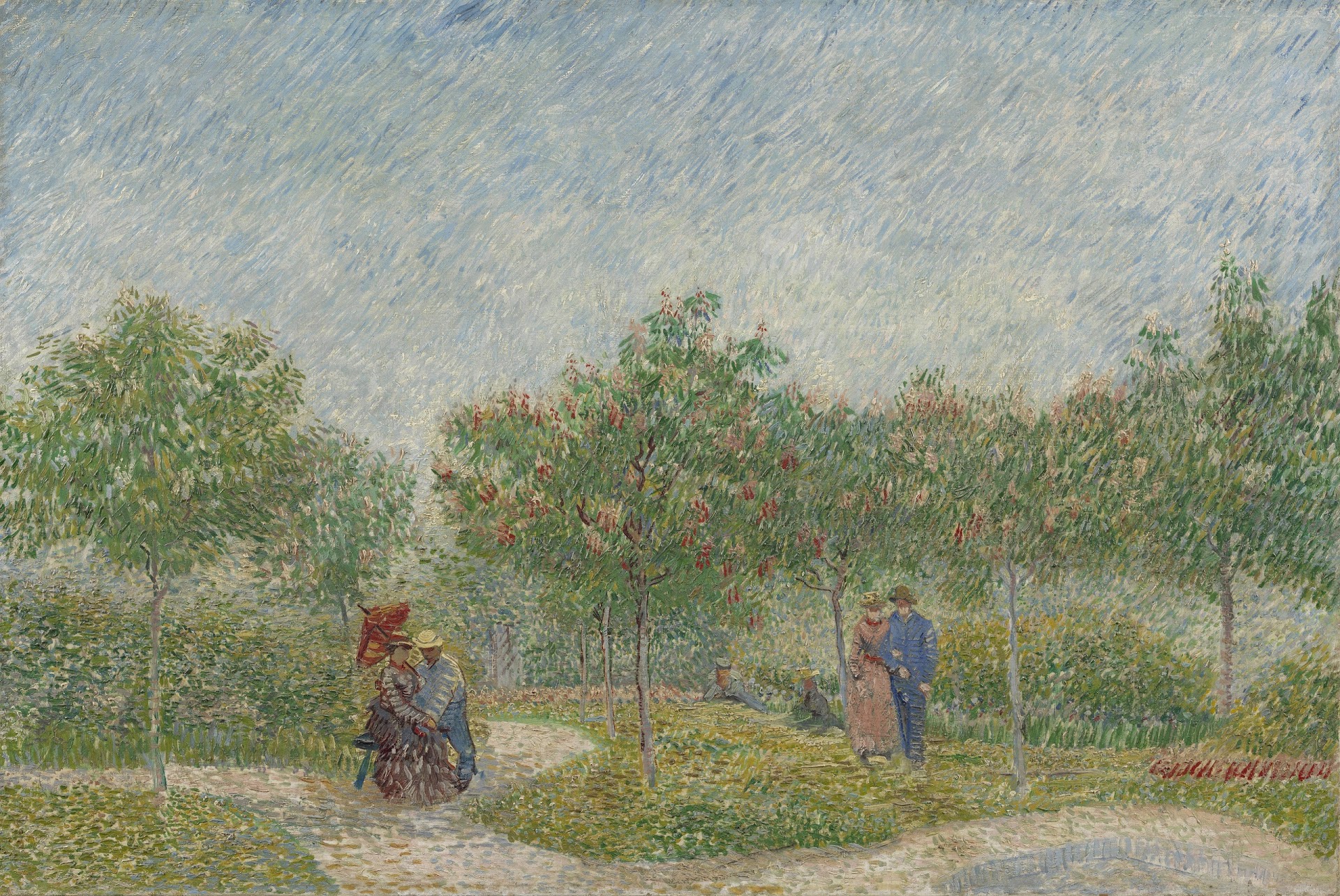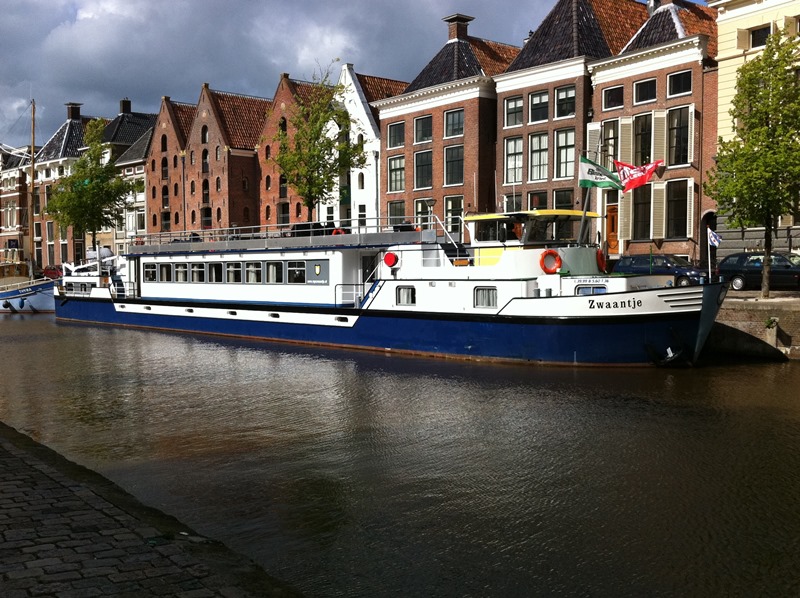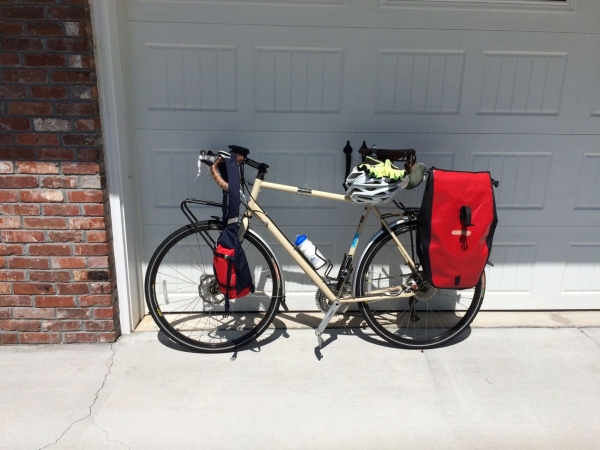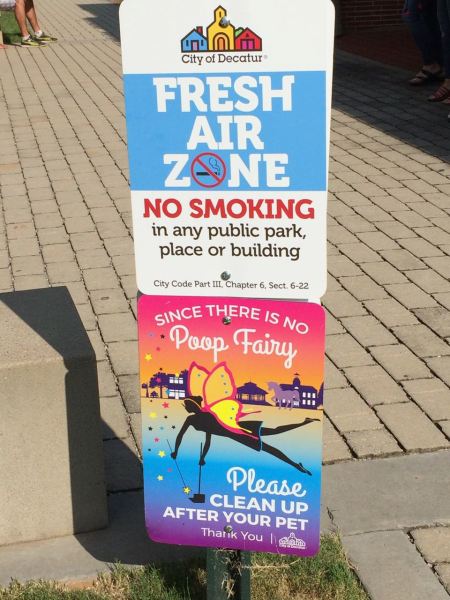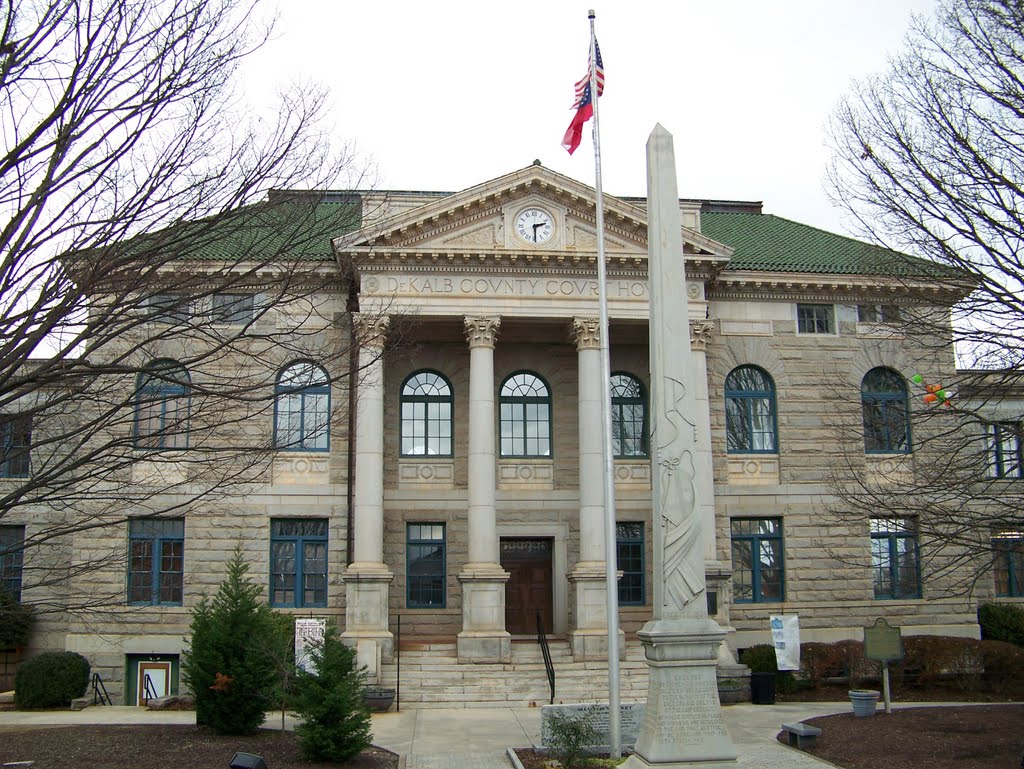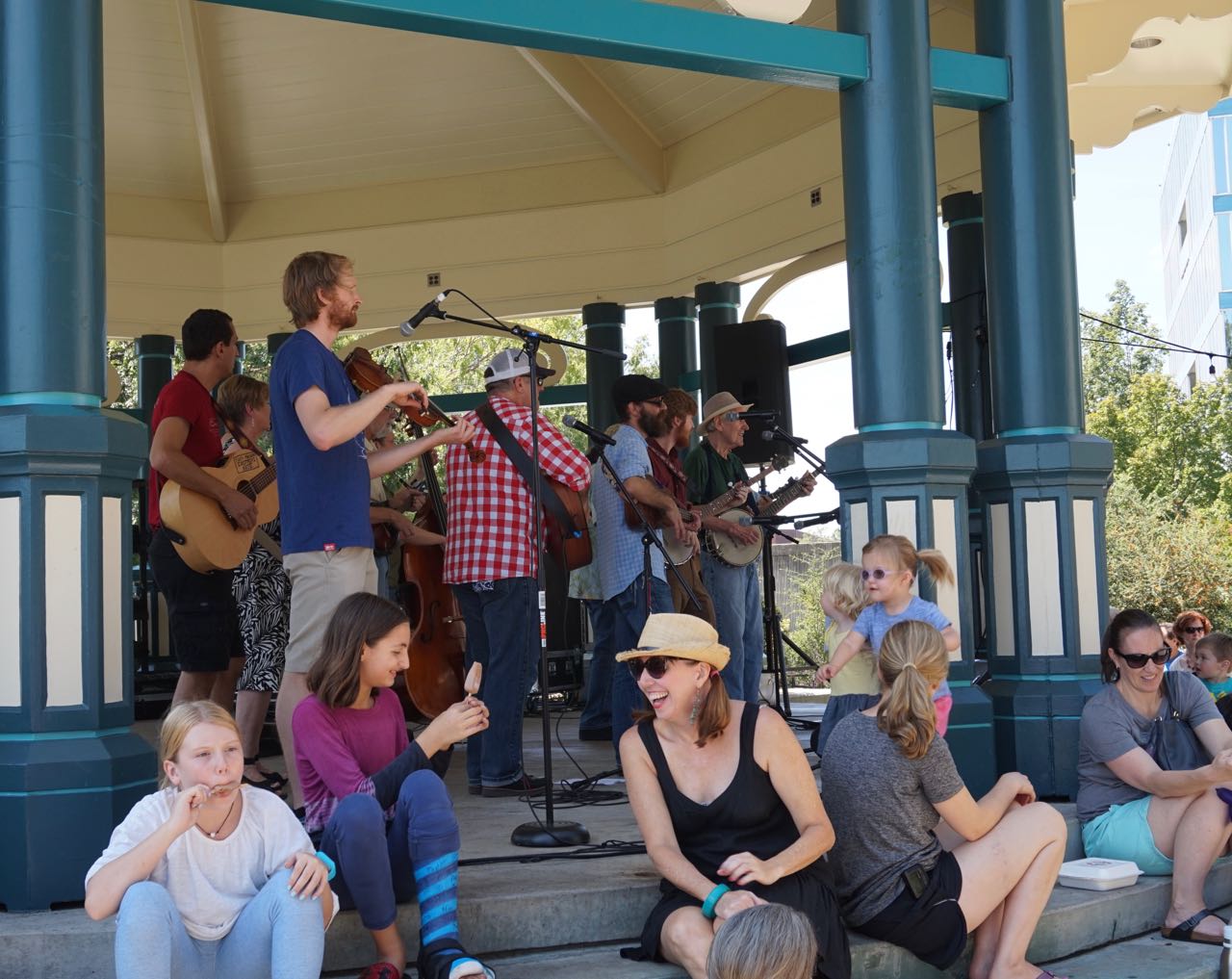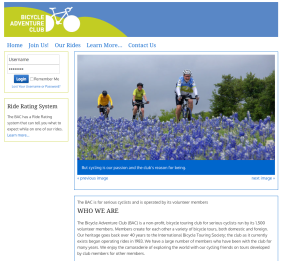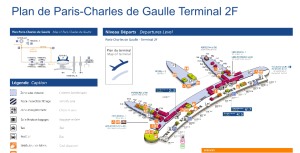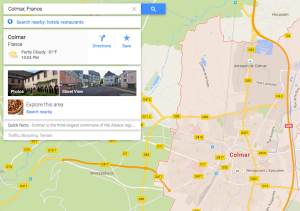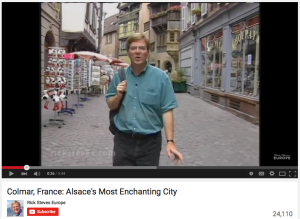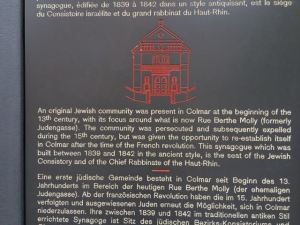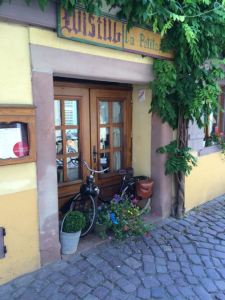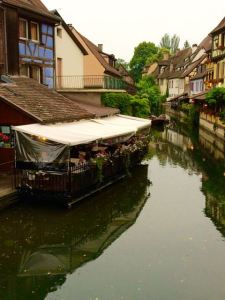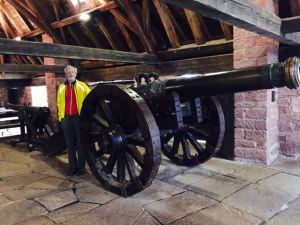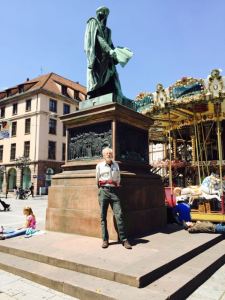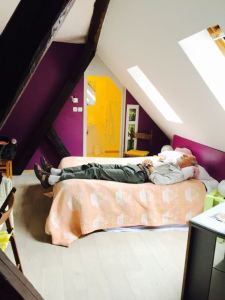This 2018 entry is a meditation on reasons to explore the world by bike, as we transition from European Bicycle Adventure Club travel on “2 wheels” to an exploration of the vast natural wonders of North America on “12 wheels.” A 4-wheel-drive SUV with a double-axle RV and 2 bikes. (4+4+2+2=12)
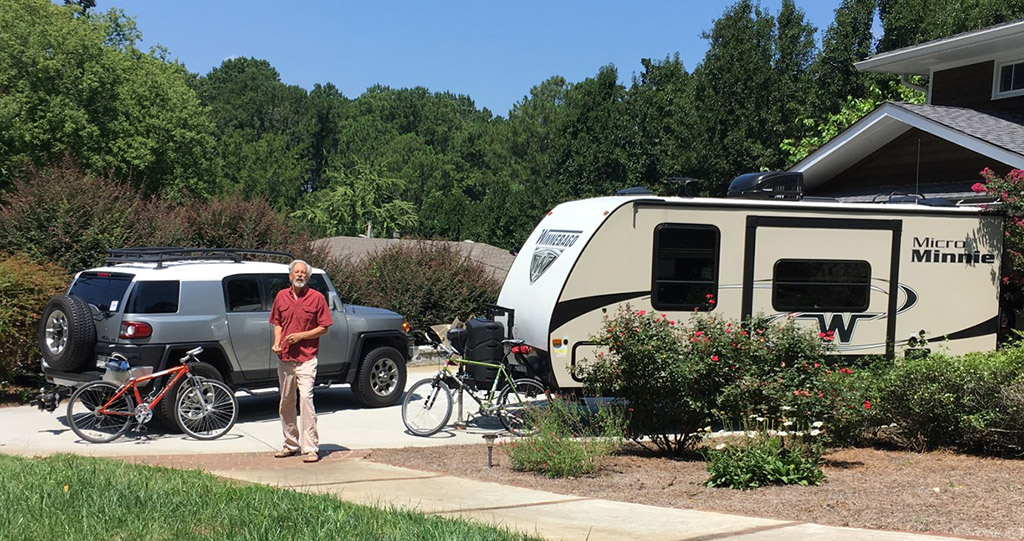
The 12 Wheel Configuration
Essential Question in a Time of Transition
In the PBS programs by Rick Steves, the opening bumper says that travel, like Public Television, enables us to to develop a better understanding of our world. And, at its best, travel changes us for the better (experience great art, music, history, food, and people). (PBS: secular sermons with aesthetic appeal.)
Travel is freedom… one of the last great sources of legal adventure. Travel is intensified living, with maximum thrills per minute. It’s recess, and we need it.
Compound Travel – Purposes and Modes
Part of bicycle travel is about the bike – about riding, self-propelled through the countryside, and feeling the wind in one’s hair. Another aspect of being on 2 wheels is pauses along the way to experience a museum, a cemetery, or a magnificent cathedral. Or, merely sit quietly by the side of a river, contemplating the flow of the universe.
Some of us refer to such contemplation as more than mere recess: it is a retreat – a hiatus from the chaos of the immediate now. (At a minimum, a treasured respite from the incessant buzzing of social media.)
Last year, based on an offering by our favorite yoga teacher, we tried a new first: a yoga retreat. With travel: a retreat on the Pacific coast of Panama.
This year, we would try another yoga retreat in a new location: Iceland.
In an effort to combine several opportunities into one massive fun vacation, we decided to bound our Yoga Retreat in Iceland with RV travel. Partly, this was the result of discovering that relatively inexpensive travel to Iceland on WOW Airlines originated at the BWI airport. Baltimore being the closest city to Atlanta to catch a WOW flight.
A brilliant plan, on a conceptual level. However, this Yoga Retreat (my naive hopes reconfigured) was, in its full-bodied reality, a Yoga Adventure! And, without much effort, RV travel can also become an Adventure.
In retrospect, why both Adventures? Together? Without a restful break in between?
As the context of the above questions implies, I’m now home, but sick – both physically and psychologically from too much chaos. Some folks want “maximum thrills per minute,” but some of us old folks want rest and recuperation from too many thrills imposed by our normal life. We travel to see new sights, at a sensible pace. We travel for a chance to meet new people. Nice people. Blue Bubble people. Courteous people. And, we want an escape route if the ostensibly nice people turn out to talk too much or express ignorant prejudices. (When one of our friends, a well read conservative whose service in the Air Force did not seem to completely warp his political sensibilities, started to refer to Alexandria Ocasio-Cortez as Bolshoi Barbie, i realized that it was time to get up to refill my wine glass – and, breathe deeply.)
In fact, we older folks view “recess” as a time for gentle reflection – not a time to run full speed in an unfamiliar environment.
Control: the hidden variable
Within the world of travel, many tour companies provide a pre-packaged experience. (e.g. a Yoga Adventure) Naturally, the personal reactions of each traveler will be unique – but, the overall schedule is in the hands of The Tour.
(remember: ”If it’s Tuesday, this must be Brussels…”?)
Usually, one’s fellow travelers are compatible people who have purchased the same experience. They may be nice people. They may enhance experiences by sharing their perspectives on the Grand Masters… But, as we all know, it only takes one truly rude and selfish person to completely sabotage synergistic enthusiasm.
On the other end of the travel spectrum is the solo voyage. (“I did it my way…”)
Adventure vs Retreat
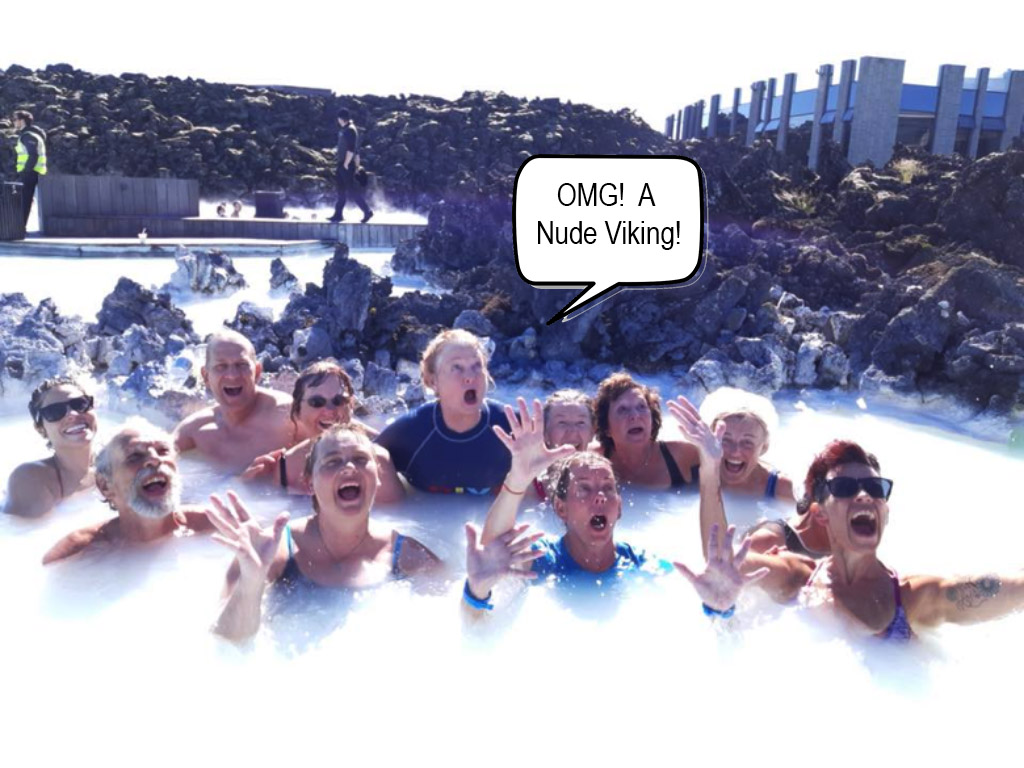
The real Blue Lagoon Adventure
Given the preference for rest and reflection by older, gentler people, a delightful “adventure” could be quite tame. It could include a visit to a museum. Not necessarily a high-end museum. (think mad dash through The Louvre: how many masterpieces / hour?)
For example, I had a lovely solo visit to The Mariners’ Museum in Newport News, VA. Quite small (compared to really well known museums). And, delightfully uncrowded.
Pacing by a solo visitor can reflect personal interests and evoked curiosity. The process of thoughtful interaction with displays of art, technology and the instruments of naval warfare, had been quite intimate. Upon my return from my gentle adventure, I enjoyed sharing the experience with my wife.
And, surprising perspectives can appear. At its best, for me, travel is educational. It provides new information. It redefines existing knowledge with extensions to what is already know. It enhances understanding. And, in an age of truthiness, it can be a corrective for inaccurate facts and divisive misunderstandings.
Balance: Planning and Flexibility
Travel by a couple (or, solo travel) requires planning. That exercise is often a catalyst for inquiry into the essential question: Why Travel.
What conceptual goals (intensified living? universal truths revealed by a different cultures? escape from the tedium of work?) are the key objectives?
What do you want to do? (“Only in Iceland can you drink white wine while getting a silica facial while relaxing in a geothermal hot spring…”) (Best: parasailing; biking; surfing; hiking…)
What do you want to see? (“We’ll get to see a real geyser! We’ll see the aurora borealis. A five-gaited horse. Windswept beaches…”)
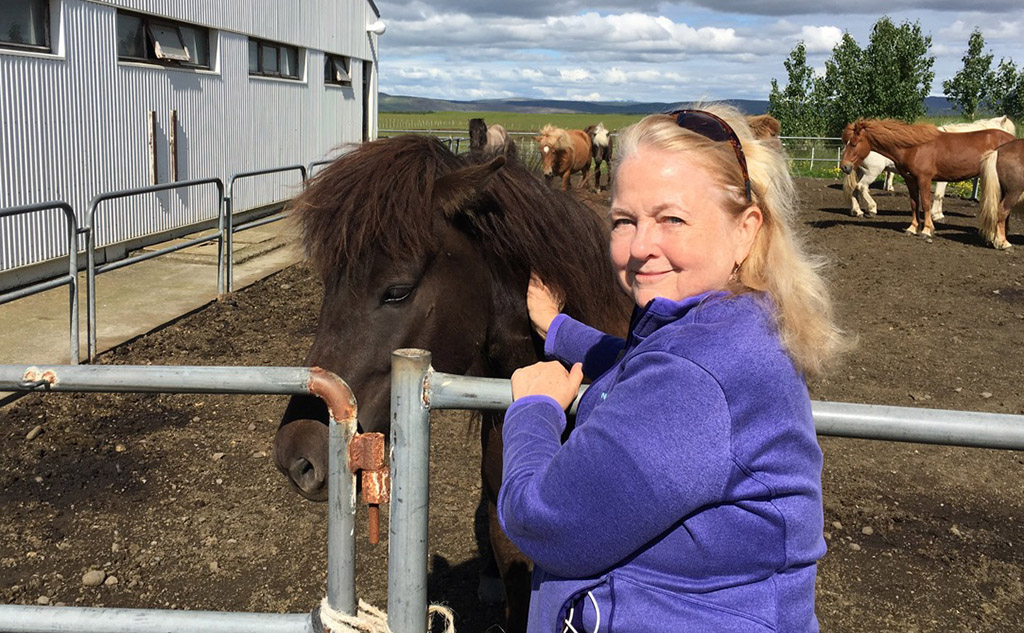
Joy and new friend
Who do you want to see? (Auntie Abigail. Grandpa Louis, before he goes into hospice. The Rolling Stones, on their last-last-fucking-last tour…)
If the itinerary is in the hands of a tour company, you can avoid planning challenges (priority compromises of a couple…). But, you lose almost all flexibility. (“Let’s spend another day here to visit the museum…” No chance!)
However, if the itinerary is in your own hands, the planning challenges are unavoidable. All the Who What When Where How question become relentless. And, contingency plans (“Yipes, the weather has gotten even worse!”) require more exploration of options. But, you have total flexibility. (“Let’s spend another week in this charming Airbnb”) Of course, the unintended consequences of changes to schedules may have wide ranging impacts.
Odd combination: RV + Travel Yogi + RV
(1 Week Each!)
Planning – the possibilities are endless

After our discovery that relatively inexpensive travel to Iceland on WOW Airlines originated in BWI airport near DC, we formulated the Great Combined Travel Adventure.
Ah Ha, we said. We can visit friends as we head north through the mountains with our RV, park the RV in the driveway of friends in Virginia, spend time with relatives in DC, and take Amtrak to BWI. On our return, we can wend our way home along the coast after a restorative week of yoga.
{Note: this is essentially a Joy-esque plan. My general rule-of-thumb is that it is better to do three things well than to do six things badly. But, Joy’s observation is that if you attempt to do seven things, you will probably accomplish four or five of them. The fact that two or three things do not happen will probably piss off only a few people…}
In a sense, the plan was rational. We could continue to deepen our RV skills without adding the bicycle component. We would have a chance to visit several wonderful people. We would experience diverse aspect of RV travel in the South (State Parks, KOA, Bubba’s RV Pit Stop… + mountains and seashore…) We could visit museums in DC, and more! At least 7 more exciting things! Including taking the RV on an ocean-going ferry.
Post-Mortem: the chaos was relentless
First, the good news:
- We did deepen our RV skills. Better at: hitch up & go; stop & unhitch… techniques for a one-night stop vs. stay awhile… (Better at sewer connections (dumping can be a continuous process – who knew?) (who would want to know?)
- We visited friends and relatives. What is it like to restart one’s life in a new city without the baggage of a dysfunctional marriage? What is the reality of a high-end DC couple with exciting careers and high ambition? What is the reality of a traditional Virginia deep-state couple with one career and retirement in sight? Who would go on a Yoga Adventure? And why?
- New culture: Iceland, once a colony of Denmark is not exactly European, but certainly not part of the new world, despite the intersection (separation) of the continental plates.
- Great food. For those of us who love lamb and just-off-the-boat fish, Iceland is the promised land.
- Good weather – until it was gone. Easy RV travel: little rain for first week. (whew!) Only a few drops of rain in Iceland until the last day of hiking. Then, quite cold and wet.
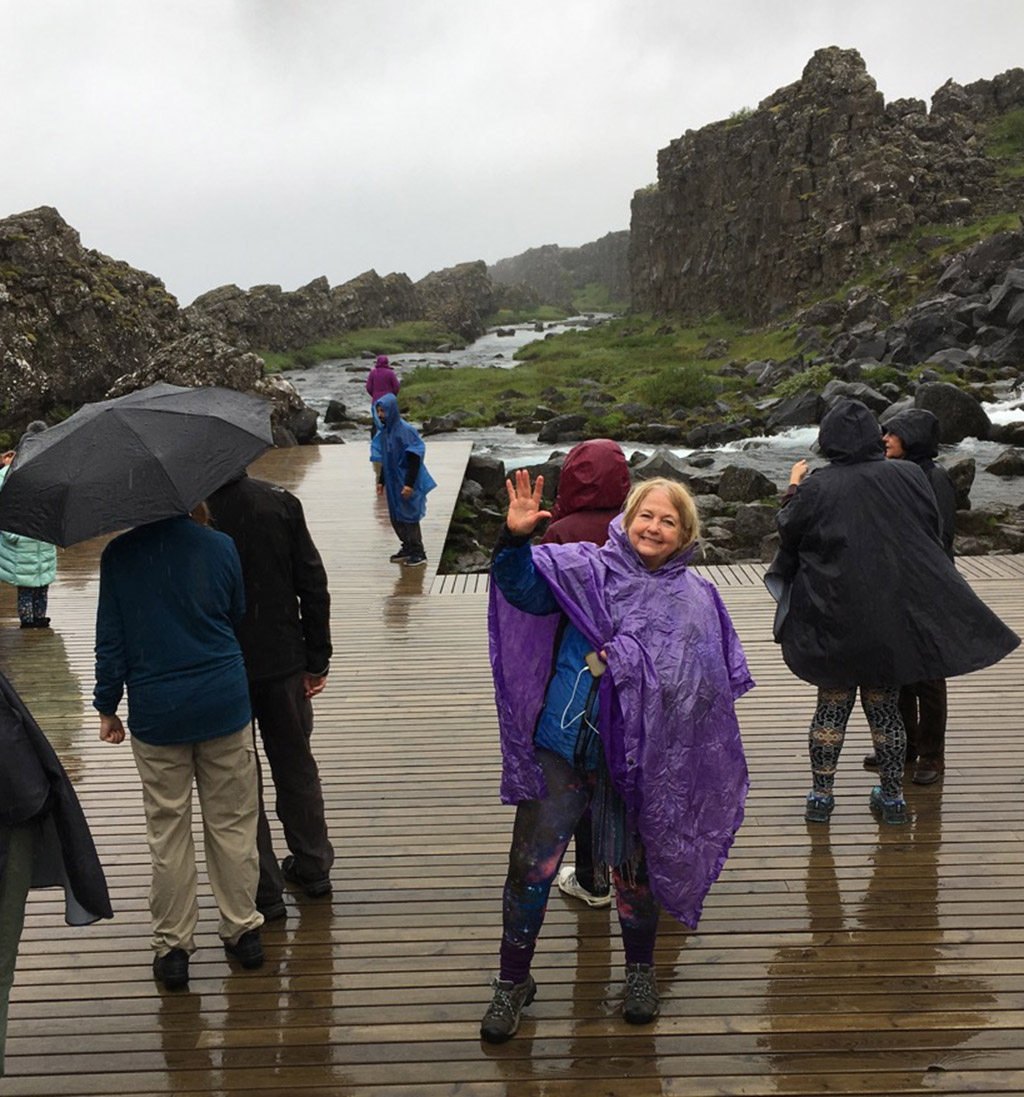
- At the start of the last leg of the trip, scattered showers, that could be mostly avoided, in DC and Virginia. Then the deluge. Flooded roads. And, to confirm my worst fears that RV stands for Redneck Vacation, I spoke to a cigarette smoking KOA worker as he paused in a mud puddle while riding his equipment-filled golf cart. “How are you, today?” I asked. “I’d be OK,” he answered, “if I could just figure out where to put all this water at.”
- Listening to a free meditation: Deepak & Oprah discuss desire as OK (if it’s in pursuit of one’s true destiny).
- Listening to an audio book: The Swerve: How the World Became Modern – (Stephen Greenblatt) discusses Epicureanism, as defined by Lucretius: OK++ (if it’s not just hedonism).
- Note: both audio sources give no credit (Greenblatt) or little credit (Deepak & Oprah) to organized religion. In fact, secular humanism (Greenblatt) and ephemeral spiritual effulgences (Deepak & Oprah) seem to be the catalysts for the effective progress of civilization.
Bad news:
- Navigation in the world of bicycle travel is challenging. [link!] Navigation for RV travel has its own moments of difficulty.
Driving into any gas station in a car makes perfect sense: gas stations were designed for cars. Duh! However, the original design of the average gas station did not include a vehicle towing a 19 foot trailer. A trailer much taller than the car. (Full height of our “Winnebago Micro Minnie” – 9’ 7”) Careful inspection of the scope of gas station areas has prevented a disaster, so far.
As a general rule, phone-based GPS systems work well. However, not every area in rural America has good (read: AT&T) mobile phone coverage. The iPhone’s navigation does poorly when out of contact with the Mother Ship. And, in rural South Carolina, road improvements can result in just enough displacement to imply that one is off the correct road.
“Proceed to the Route!” Making a required (or, apparently required) U-turn with an RV is not easy. Not easy, despite the fact that some 4-lane highways in South Carolina have occasional legal U-turn openings. Who knew? (Allowing a U-turn on a 4-lane highway seems a bit like having an emergency exit in an elevator, but – oh well, different cultures…)
- Bad weather. Rain is essential for the growth of trees and flowers. And, crops. So it is natural to celebrate a bit of wet weather. If a seasoned traveler has a raincoat and/or an umbrella, occasional rain is not a serious inconvenience. The British put this well: “There is no inclement weather, merely inappropriate clothing.”
However, Iceland had 31 days of rain in May. Too much.

- Coastal North Carolina (Outer Banks) greeted us with flooded roads. Fun to pilot an RV through an ad hoc swamp? No.
- WOW Airlines. I suspect that the name comes from: “Wow! I can’t believe that they screwed this up, too!” After getting bumped out of our exit row on the flight to Iceland (“Oops, sorry about that,” said the flight attendant), we were quick to notice (before boarding the flight) that the same thing happened on the way home. “Oops, sorry about that,” said the person at the customer service desk in Reykjavik airport. “Maybe the flight crew can fix this…” Nope. So much for paying extra for a bit of legroom…
- Amtrak. Good safety practices mean that it is a good idea to wait for all exiting passengers to leave the train completely before pulling away from the station. Amtrak probably does that most of the time. But, at the BWI airport stop, several of us were terrified to discover that we needed to pry the doors back open – only to step from a moving train onto a stationary platform. A young girl screamed in horror as she realized that she might be separated from her mother until the train reached the next stop…
How to complain? One answer is: “don’t bother with a complaint.” No broken bones, no lost children, no serious difficulty. Just keep moving…
But, if serious disasters are to be avoided, civic responsibility requires bringing near-disasters to the attention of people who can improve safety procedures. So, a chat with the person at the ticket counter in the station. “On Monday, call this number, and ask to speak to Customer Relations,” she said. Apparently customer relations is not a needed function on weekends. But, we were off to Iceland in a few hours, and an international call to a 1-800 number (with a voice menu system and musical hold delays) seemed a task that was best done in writing when back in the USA.
Eventually, a response…
- Travel can be exciting and invigorating. It can also be too exciting. Some of us contemplative types call that stress. And, the more complex the travel becomes, the more likely excessive invigoration will sour into rancid chaos. Exhaustion and illness often follow.
But, Bad News is merely a footnote if one returns with good memories, amusing stories, and an appreciation for new ideas and perspectives.
New Thoughts on the Nature of Travel
At the start of this blog entry, I mentioned the purposes of travel: “to develop a better understanding of our world” and “to experience great art, music, history, food, and people”.
Of course, a “better understanding of our world” often includes a deeper understanding of ourselves. We appear in a new context; we imagine who we might have been in an earlier age; we contemplate the ebb and flow of civilizations.
Retreat (as technique for renewal):
In its most general sense, a “retreat” means a quiet or secluded place in which one can rest and relax. In a religious sense, a “retreat” means a period of seclusion for the purposes of prayer and meditation.
Although yoga, in its Western spandex-clad aerobic incarnation is no longer a religion per se, I have sometimes referred to inspired yoga teachers as acolytes of the Church of The Sticky Mat.
Indeed, one of the reasons for our 2017 Yoga Retreat to Panama was the spiritual nature of the yoga instructor, the trip organizer. Her classes are a reminder that, at its best, the world of the body, the mind and the spirit all harmonize with the same universal laws.
And, she was the instructor / leader of our Yoga Adventure in Iceland.
Adventure (as a way to run with scissors):
As a noun, “adventure” means daring and exciting activity calling for enterprise and enthusiasm. But its first meaning also has implications of engaging in hazardous activity, especially the exploration of unknown territory. Even to put one’s life at risk.
Iceland is not an unknown world. However, incessant stimulation (yoga classes, frenetic bus travel, incessant conversations, long kikes in the overgrown lava fields…) can easily transmute a retreat into an all-too-exciting adventure.
Conclusion
The entries in this blog since its start (2012) have been about European bike travel. That focus has enabled not only comments on bike travel itself, but also reflections on the layers of culture that motivate much European tourism.
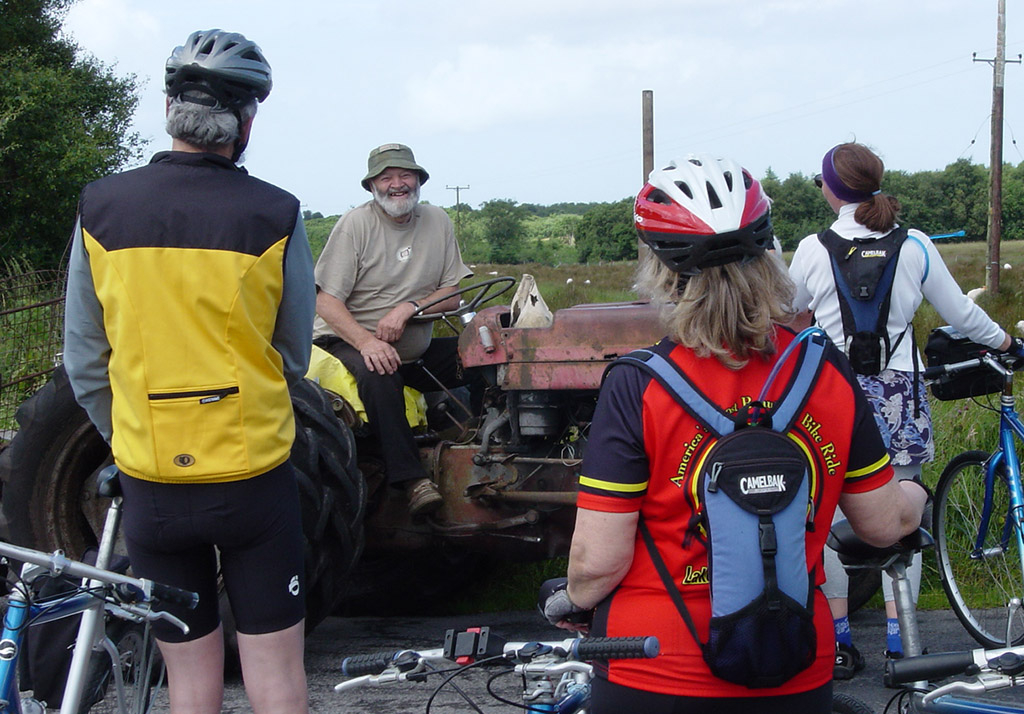
Irish farmer – 2004 (First European bike trip)
Travels in Europe, often informed by prior understandings of history, augmented by thoughtful comments from guides, and enriched by conversations along the way, illuminate the trajectories of some of mankind’s extraordinary developments.
Beyond the hypothesis of Guns, Germs and Steel by Jared Diamond, there is a complex and subtle flow of ideas of progress, examples of regression, monumental accomplishments, horrific periods of repression… A panoply of experiences: great art, music, history, food, and people across centuries.
In European Bicycle Adventure Club travel there is no need for audio books; no time when stuffing MP3-connected earplugs into one’s ears makes sense.
But, in RV travel, when one is on the move, it is possible to connect an iPod or iPhone to the speaker system of the tow vehicle. Then, a travelling couple can listen to and comment on an audio book that illuminates aspects of European progress or a web-hosted mediation on the best way realize one’s dreams.
Audio
As we traveled between Atlanta and Newport News in the weeks before and after the Iceland Adventure, we listened to two sources of enlightenment: (as mentioned in “Good News”)
Oprah and Deepak’s meditation on “Desire” as a proper goal for focusing your life:
The Origins of the 21-Day Meditation Experience
“Meditation is a simple practice that brings profound results. This truth – known personally to both Oprah Winfrey and Deepak Chopra – is the driving force that inspired two of the most influential spiritual leaders of our time to come together to create their ground-breaking 21-Day Meditation Experience Series.” [link]
The audiobook version of The Swerve: How the World Became Modern by Stephen Greenblatt is “both an innovative work of history and a thrilling story of discovery, in which one manuscript, plucked from a thousand years of neglect, changed the course of human thought and made possible the world as we know it.” [Amazon link]
Suddenly, despite our physical location in the mud puddles of coastal North Carolina, we were exploring other worlds.
In the case of Oprah and Deepak, we transitioned into the world’s wisdom traditions with a pervasive assumption about the inherent goodness of each person – and the beneficent splendor of our desires. In the case of Stephen Greenblatt, we had a more nuanced view of human nature – and persuasive arguments chronicling ideas that influence the course of history. Views of the universe defined without support from a specific religion.
Indeed, Greenblatt’s central argument explaining “The Nature of Things (De Reum Natura)”, a poem by Lucretius, is that the next world, the world of the Roman Gods (or, by implication), the God of the Judeo-Christian tradition, does not exist. We are merely atoms. Interesting collections of matter, combined at a point in time to form beings that eat, experience attraction, and procreate. Therefore, our highest good is pleasure.
The authorities of the ecclesiastical world have opposed this heresy since Lucretius created his masterpiece in the time before Christ. In the centuries since its rediscovery by Poggio at the start of the Renaissance, paroxysms of book burning have included this volume.
As the The Swerve progressed in its wide-ranging observations on the impact of new ideas, it jogged a vague memory of Girolamo Savonarola’s fanatical excesses to suppress hedonistic behavior. I had forgotten (if I ever really knew) that his religious fanaticism occurred in Florence, the epicenter of the Renaissance. How, I asked, could the best educated population of Europe – the supporters of scientific exploration and artistic excellence – endorse a rabid priest who advocated the destruction of the accomplishments of a civilized world?
And, how could those same “civilized” people – four years later – burn Savonarola at the stake, in an apparent effort to reestablish a city with a lower level of religiosity? (A return to ”the pursuit of happiness” – so to speak.)
Perhaps, Savonarola – sensing pervasive excesses of pleasure seeking, observing the encirclement of Florence by infidel forces, appealing to memories of a more prosperous time – hit upon the perfect slogan to rally the pathologically religious: “Make Florence Great Again.”

Clearly, the nuanced layers of Europe’s civilizations – whether experienced directly on 2 wheels or experienced vicariously through brilliant observations – have relevance to a deeper understanding of our world and of ourselves.
Soon, more travels on 12 wheels. And, eventually, back to Europe for more exploration and reflection.
